
Our Cellars
Antichi Benefizi Az. Agr.
Antichi Benefizi Az. Agr.
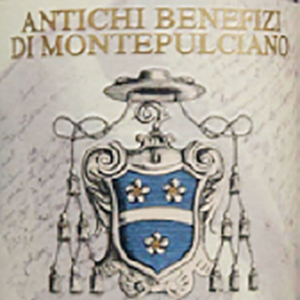 Antichi Benefizi is owned and managed by the Diocesan Institute for the Support of the Clergy of the Diocese of Montepulciano-Chiusi-Pienza.
Antichi Benefizi is owned and managed by the Diocesan Institute for the Support of the Clergy of the Diocese of Montepulciano-Chiusi-Pienza.This canonical institution was established in the mid-1980s by Bishop Monsignor Alberto Giglioli and is located in Montepulciano, inside the Bishop's Palace.
The label of Vino Nobile bears the bishop's coat of arms of the first bishop of the Diocese: Spinello Benci.
The Antichi Benefizi winery with the Cantina di Cervognano represents a new reality of Vino Nobile di Montepulciano: linked to the renovation of the Church of St. Andrew in Cervognano in 2000, the winery contributes to the support of the clergy of the Diocese of Montepulciano, Chiusi and Pienza.
The vineyards are planted between Cervognano, Argiano and Nottola, the heart of the historic DOCG production area, and enjoy ideal soil composition, exposure, altitude and microclimate for growing vines.
The varieties planted are the local Prugnolo Gentile, Canaiolo and Ciliegiolo, from which the house's Nobile label is obtained in varying percentages.
Antico Colle
Antico Colle
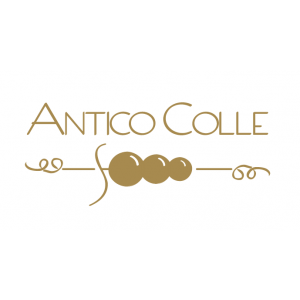 The “Antico Colle” family business is located on the eastern side of Montepulciano, whereas the vineyards are spread amongst various strips of council land covered by the D.O.C.G. certificate (Denominazione di Origine Controllata e Garantita – certification of controlled and guaranteed origin) and D.O.C. (Denominazione di Origine Controllata – certification of controlled origin).
The “Antico Colle” family business is located on the eastern side of Montepulciano, whereas the vineyards are spread amongst various strips of council land covered by the D.O.C.G. certificate (Denominazione di Origine Controllata e Garantita – certification of controlled and guaranteed origin) and D.O.C. (Denominazione di Origine Controllata – certification of controlled origin).The estate is made up in total of about 27 hectares of land, conducted according to the organic farming method, from which are obtained the following wines: Vino Nobile di Montepulciano DOCG, Rosso di Montepulciano DOC, Colli Chianti Senesi DOCG,
IGT (Indicazione Geografica Tipica - certification of geographic origin) Rosso and Bianco Toscano, Grappa and "Antico Colle" Extra Virgin Olive Oil.
The terrain where the vines are grown has both an optimal and variable layout which is perfect for the ripening of the grapes and together with the average altitude of 300-400 m above sea level and the good ventilation reduces to a minimum the risks associated with the plants’ biology.
The vines most commonly grown are: Prugnolo Gentile (Sangiovese clone), Merlot, Cabernet Sauvignon, Canaiolo Nero, Mammolo.
The make up of the soil in this terrain is of medium mix, layered, clayey, tuffaceous and sandy.
Avignonesi
Avignonesi
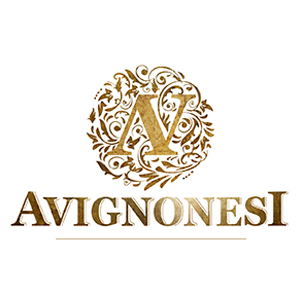 Conceived in 1974, Avignonesi is named after the founding family of the estate.
Conceived in 1974, Avignonesi is named after the founding family of the estate.Acquired in 2009 by Virginie Saverys, Avignonesi has grown in size and at the same time become a leader in biodynamic viticulture in Italy: the entire estate is now run biodynamically and has been certified organic since spring 2016.
Thanks to Virginie's respect for the ecosystem, her staff and the final consumer, the winery started producing and crafting organic wines that are linked to their origins and are unique.
To date, the estate has grown to 175 hectares of vineyards, including the purchase of a state-of-the-art winemaking facility in the Montepulciano appellation.
Avignonesi wines bring out the richness and elegance of Montepulciano's heritage.
Az. Agr. Tiberini
Az. Agr. Tiberini
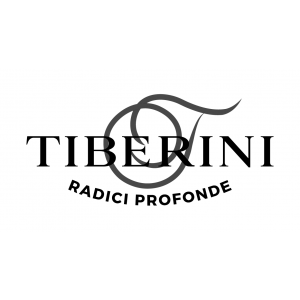 The Tiberini - Podere Le Caggiole farm is a small production company of about 22 hectares of land entirely conducted in organic farming, of which 14 are vineyards and 2 are specialized olive groves, placed at an average height of 310 m. S.l.m. and located in the northern part of the territory of Montepulciano, in the area of Le Caggiole which has always been defined as one of the pulsing hearts of the production of Vino Nobile, and where vines were cultivated and made wine since Etruscan times.
The Tiberini - Podere Le Caggiole farm is a small production company of about 22 hectares of land entirely conducted in organic farming, of which 14 are vineyards and 2 are specialized olive groves, placed at an average height of 310 m. S.l.m. and located in the northern part of the territory of Montepulciano, in the area of Le Caggiole which has always been defined as one of the pulsing hearts of the production of Vino Nobile, and where vines were cultivated and made wine since Etruscan times.Our family has lived and worked at Podere Le Caggiole for 7 generations now, first as sharecroppers and winemakers of the Gamberucci Farm, and since 1962 in property and managed directly. The work started more than 150 years ago with the first generation by the patriarch Giuseppe Tiberini, has always been a handing down of the profession of winemaker and cellarman from generation to generation, and to love our vineyard as a mother who will have to give us her son wine, to which in the cellar attention and passions must be paid to make it grow strong and authentic in its territorial characteristics.
Today the use of modern technologies in the vineyard, such as weather stations, drones, cuttingedge mechanical equipment, allow us to optimize our organic philosophy by taking it to the extreme use of minimum quantities of copper and sulfur thus seeking every year to increase the self-defense of the plants, and with the biological enrichment of the soil, encourage maximum biodiversity. In this way, we bring grapes of absolute character and perfect quality to the cellar, which we vinify and transform into wine, always supporting organic logic, carrying out all the steps of wine production directly in our cellar, and having our future certification of sustainable company as our next objective.
In this family journey, practiced today with attention to the appropriate technical tools to make our quality philosophy ever better, we have never forgotten to look back and learn from the experiences of the past the best ideas of Know How to be applied daily for our future reality.
In doing so, our choices were exclusively motivated by the desire to improve and continue to perfect the philosophy of producing wines full of character and personality, faithful to the peculiarities of our territory, respectful of the environment in which we live, and representative of a style family handed down from generations of people who lived in our land and in the wine that has always been produced here.
Bindella - Tenuta Vallocaia
Bindella - Tenuta Vallocaia
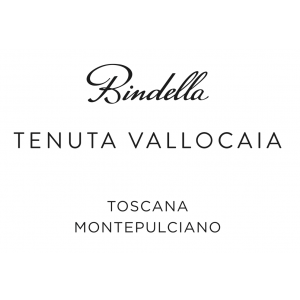 The Vallocaia Estate has special character. A place where wine, art, history, passion and people live in a dynamic equilibrium, dedicated to creating wines that are the best way to tell the tales of this land in the heart of Tuscany.
The Vallocaia Estate has special character. A place where wine, art, history, passion and people live in a dynamic equilibrium, dedicated to creating wines that are the best way to tell the tales of this land in the heart of Tuscany.At the Vallocaia Estate, one breathes the energy of the future, in a land that still resonates with the scent of the Renaissance, of Humanism and of beauty.
Here, one experiments, one speaks with the land to understand its character and transfer it to its Sangiovese, in order to project it towards a modern, sophisticated and more elegant Vino Nobile di Montepulciano.
The new cellar was imagined as a place that is, at the same time, home and workshop, a parlour and place of enological and gastronomic sharing.
A place respectful of the landscape but effective and functional nonetheless and a place, above all, that is able to narrate a vision projected in time and one which dialogues with future generations.
We conceived this place with the idea of it becoming a destination, a place which could bring in new visitors, to get to know the world of wine more intimately, immersing them in a place of beauty.
“We guarantee our wines from the vines to the glass”.
Boscarelli
Boscarelli
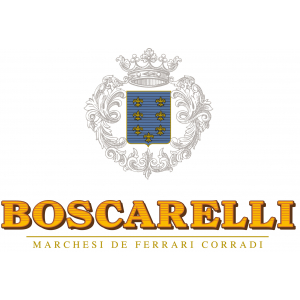 Boscarelli is a small estate founded in 1962 by Egidio Corradi by an idea of Paola, the daughter of Egidio, and Ippolito De Ferrari, her husband, who desired to rediscover the taste and the aromas of the Vino Nobile’s tradition.
Boscarelli is a small estate founded in 1962 by Egidio Corradi by an idea of Paola, the daughter of Egidio, and Ippolito De Ferrari, her husband, who desired to rediscover the taste and the aromas of the Vino Nobile’s tradition.Today the estate is managed by Paola De Ferrari, and her two sons Luca and Nicolò, who pursue their aim, personally directing the production and the growing of the 18 hectares situated on the hill of Cervognano, always considered one of the best zone for the production of Vino Nobile.
The first vintage of Poderi Boscarelli was in 1965; in the vintage 1968 were produced the first 2000 btl.
The most part of the grapes used are Sangiovese Prugnolo Gentile that grows on a calcareous soil of alluvional origin, sandy with a good percentage of lime and argil.
The current output of 90/100.000 bottles is divided into the following labels: regular Vino Nobile di Montepulciano, Vino Nobile di Montepulciano Riserva, a Cru of Vino Nobile the “Nocio dei Boscarelli”, IGT “Boscarelli dei Boscarelli”, Rosso “De Ferrari” IGT, Rosso di Montepulciano DOC “Prugnolo”, Grappa, Olio Extravergine di Oliva e Vinsanto.
Canneto
Canneto
 It is located near the temple of San Biagio. It has been since ever well know and appreciated because of its quality wine; and in recent years, for the beauty of the site, it has been the location of advertising (Dolce and Gabbana) and TV series (Quantico - Netflix).
It is located near the temple of San Biagio. It has been since ever well know and appreciated because of its quality wine; and in recent years, for the beauty of the site, it has been the location of advertising (Dolce and Gabbana) and TV series (Quantico - Netflix).It has an extension of 48 hectares; 31 hectares are covered by the vineyard and 4 by the olive tree plantation. The vineyard occupies 31 hechtares of soils that are tendentially loose, marly-siliceous and tufaceos-siliceous in nature.
They are located at an altitude of about 350-400 metres, and have a prevalently south-westerly exposure.
The vines are subjected to energetic pruning in winter in order to mantain grapes production well below the quantitative limit fixed by the disciplinary.
Lastly, green pruning is aimed at arranging the bunches of grapes in the most favourable position for ventilation and the sun’s radiation.
The grapes, that are carefully selected on the appropriate selection table, are submitted to soft squeezing and the stripping of their stalks, after which the squeezed product is left to fermenta t a controlled temperature for about 15-20 days.
Our Vino Nobile is aged at least two years in 30-50 hl Slavonia oak wook barrels and in 5 hl French oak wood barrels, later on the wine put into bottles, where it becomes even more refined for at least six months. 100.000 bottles are annually produced and 70% of production is sold abroad.
Cantina Chiacchiera
Cantina Chiacchiera
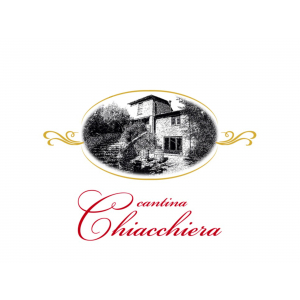 The Chiacchiera Winery was founded in 2010 by Emanuela Mancianti and her family. It’s situated in Cervognano, on the hills of Montepulciano which for the less knowledgeable is one of the most suited for the production of wine and olive oil.
The Chiacchiera Winery was founded in 2010 by Emanuela Mancianti and her family. It’s situated in Cervognano, on the hills of Montepulciano which for the less knowledgeable is one of the most suited for the production of wine and olive oil.The 18 hectare estate runs down the gentle hills from the Madonna delle Querce church to Acquaviva and the of type of production in each plot, was chosen after careful thought on how to obtain the best quality and genuinity of products.
Emanuela herself personally and meticulously follows every phase of the farming and the vineyards, leaving nothing to chance and this is seen in the fact that after just 7 years of activity and upon reaching a mature productivity she has decided to start bottling and reatail sell her product.
In the wine cellar there is a comfortable room where you can taste the winery’ best products in complete tranquility.
The name CHIACCHIERA was chosen by Emanuela’s father Mario to highlight the fact that it’s a family business.
Mario was given this nickname precisely because his guests would be enchanted by his conversation, just as a good wine should enchant who drinks it.
Cantina del Giusto
Cantina del Giusto
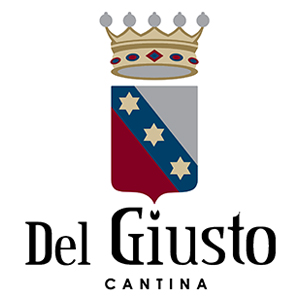 The Cantina Del Giusto is a small size farm situated near the foot of Montepulciano in the area of Acquaviva; it is managed by the family Del Giusto, by their three generations of winegrowers and oil producers in the territory of Montepulciano, who themselves look after the production and marketing.
The Cantina Del Giusto is a small size farm situated near the foot of Montepulciano in the area of Acquaviva; it is managed by the family Del Giusto, by their three generations of winegrowers and oil producers in the territory of Montepulciano, who themselves look after the production and marketing.The wines of the Cantina Del Giusto are obtained exclusively from grapes that come from their own vineyards; thanks to the limited production it is possible to concentrate on the quality without the need of force, as tradition desires, with the complete respect of nature and the environment.
It is thus that our wines born, fine and exceptional wines that succeed in being “innovators” thanks to the modern technology and new enological practices but at the same time “traditionalists” thanks to the agricultural knowledge of the century old cellar.
A careful and meticulous work, begins from our land to arrive to gladden your senses.
Cantina Luteraia
Cantina Luteraia
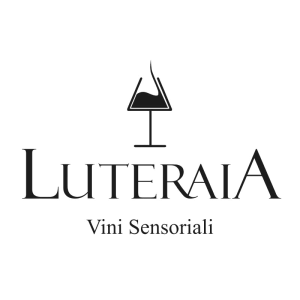 Luteraia is located in Montepulciano, in the heart of Tuscany. A magical Vineyard, where no less than five different soils, now fat, then stony, now "cooper" sulfurous, then clay and sandy give life to our natural, indigo and biodynamic wines. From the soil to the bottle they make manifest what the vineyard gives each year. Through their innovative "Indigo Philosophy" they ensure that each Indigo Wine is a message of love and wonder to anyone who tastes it.
Luteraia is located in Montepulciano, in the heart of Tuscany. A magical Vineyard, where no less than five different soils, now fat, then stony, now "cooper" sulfurous, then clay and sandy give life to our natural, indigo and biodynamic wines. From the soil to the bottle they make manifest what the vineyard gives each year. Through their innovative "Indigo Philosophy" they ensure that each Indigo Wine is a message of love and wonder to anyone who tastes it. Carpineto
Carpineto
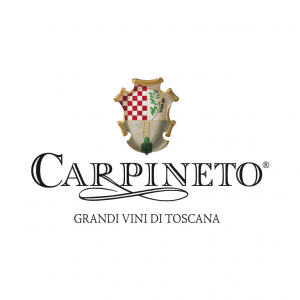 Carpineto has been recognized by Wine Spectator as one of the 200 most prestigious wineries in the world, with the Vino Nobile Riserva in their coveted Top 100 Wines of the Year for three times. In addition, the highly awarded Vigneto Poggio Sant’Enrico has been the first wine produced from 100% sangiovese in the territory of Montepulciano already with the 1998 vintage.
Carpineto has been recognized by Wine Spectator as one of the 200 most prestigious wineries in the world, with the Vino Nobile Riserva in their coveted Top 100 Wines of the Year for three times. In addition, the highly awarded Vigneto Poggio Sant’Enrico has been the first wine produced from 100% sangiovese in the territory of Montepulciano already with the 1998 vintage.Founded by the Sacchet and Zaccheo families in Greve in Chianti in 1967, Carpineto farms 500 hectares in Tuscany spread amongst 5 estates in the regions of Chianti Classico, Vino Nobile, Brunello and Maremma and includes such favorites as Dogajolo, Farnito and the Appodiati Single Vineyard Collection, as well as single orchard olive oils. Wines are exported to over 70 countries in the world.
Carpineto started producing Vino Nobile in the early 80’s and its passion for this appellation culminated in the acquisition of a 186 hectares farm located across the communes of Montepulciano and Chianciano Terme in the southern part of the appellation.
The sustainability summary: 500 ha of land (160 ha woods); Over 500 km of vines with an enormous canopy surface; 150 kw solar power system; Biodiversity protection; Precision agriculture with state-of-the-art technology; Spontaneous stabilization of single vineyard and ‘riserva’ level wines; No use of additives, adjuvants or stabilizers (with the exception of sulphites); VIVA certification for Soil, Air and Water; Certified IFS and ISO 9001. The wines are Vegan Friendly.
Carpineto is prodigiously carbon positive.
Casale Daviddi
Casale Daviddi
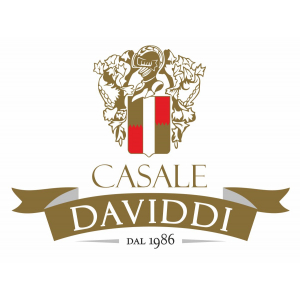 Family Daviddi started producing Vino Nobile di Montepulciano in the early '800, in the territory of Valiano di Montepulciano, thanks to the skill of Giustino Daviddi.
Family Daviddi started producing Vino Nobile di Montepulciano in the early '800, in the territory of Valiano di Montepulciano, thanks to the skill of Giustino Daviddi.The country and winemaking tradition passed on from father to son to become, with the grandniece Aldimaro, the main activity of the family in the 60s.
The initial production, of about 5.000 bottles a year, has been increasing over the time while respecting the tradition and authenticity handed over the centuries.
Contucci
Contucci
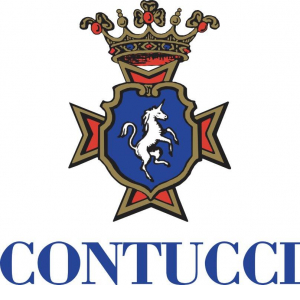 The Contucci family is one of the oldest in Montepulciano, it is certainly among those who have a residence here: in fact they have lived here continually since the XI century. Prior to the Reinassance they started cultivating vines and still continue today, to make Montepulciano’s wine famous throughout the world.
The Contucci family is one of the oldest in Montepulciano, it is certainly among those who have a residence here: in fact they have lived here continually since the XI century. Prior to the Reinassance they started cultivating vines and still continue today, to make Montepulciano’s wine famous throughout the world.Their farm holding area extends over 170 hectares, of which 21 are cultivated vineyards.
The vineyards, consist only of native vines, and are grown by the spurred cordon technique with a density around 4.000 plants that yield 55 quintiles per hectare, that allow the growth of excellent quality grapes.
The agronomic operations are carried out with the maximum respect for the environment, the “guided struggle” method is practiced, the fertilization and thinning out of the bunches is done according to necessity, the harvest is done manually, in boxes and with various stages for the selection of the bunches.
In the historic cellars dating from the XIII cent. all the wines of the company are aged: Vino Nobile (Classic, Pietra Rossa, Mulinvecchio, Palazzo Contucci, Riserva), Rosso di Montepulciano, Il Sansovino (Named after the sculptor and architect Andrea Contucci called “Sansovino” 1467- 1529), Vin Santo, Bianco della Contessa, around a total of 100.000 bottles a year are produced.
Sales also include the Contucci’s Extra Virgin Olive Oil, around 50% of which is sold in the cellar, the remainder is exported in Austria, Germany, Switzerland, England, Belgium, Estonia, Luxembourg, Sweden, Denmark, Holland, Poland, Australia, Japan, China, Korea, Canada and USA and is sold in the sector HoReCa.
Croce di Febo Az. Agr. Biologica
Croce di Febo Az. Agr. Biologica
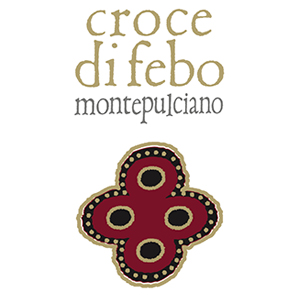 The Earth is the mother of life and vines are the link between its grapes and the Earth. They receive our attention and the plant grows towards the sun’s rays, its vital energy.
The Earth is the mother of life and vines are the link between its grapes and the Earth. They receive our attention and the plant grows towards the sun’s rays, its vital energy.Viticulture for us is the research of producing the ideal bunch of grapes, whose energy and essence remain intact. With time and patience we constantly reduce external influence, preserving purity.
The cellar is the place where we listen, observe and recognize the character of the wine and harmoniously bring it to life. We accompany our wine with care, so that it develops into the faithful mirror of our terroir.
VIGNA LA PIETRA, Area Fontelellera, 470 mt o.s.l, soils of Pliocene origin, exposure south/east, calcareous clay soil with sandstones and fossils.
VIGNA I CAPPUCCINI, Area Boscalti 520 mt o.s.l, soils of Mesozoic origin, north exposure, calcareous clay soil with granite and dolomites stones.
Crociani
Crociani
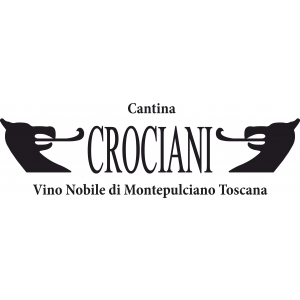 "When you are born among the barrels and vineyards, as I was, sooner or later you give into their charms.
"When you are born among the barrels and vineyards, as I was, sooner or later you give into their charms.After spending years of organizing concerts for some of the most famous Italian pop singers, I decided to return to my origins and go into the wine business. My father Arnaldo and by my brother Giorgio before me had been working in the business in Montepulciano (Siena) for many years.
I went from being a non-drinker to wanting to create a wine that I liked.
Combing my passion and the family experience, I chose to further open up our international markets and use the most modern technology available.
The principle asset of my business, however, remains the vineyard located in Caggiole, 10 hectares in the heart of the Vino Nobile area.
My wine is produced in a new cellar and aged in barrels of 15-20hl that are situated in the 13th century cellar in the historical center of Montepulciano.
The Crociani bottles of Vino Nobile di Montepulciano today travel the world. They arrive at your table and are the result of a labor of love and determination.
They have history filled with many vines, many paths, and many stories, but the dominant component, without doubt, is love."
D&D
D&D
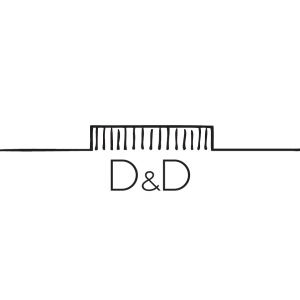 When you are born in a family where both parents and grandparents have always worked in the fields and in the vineyards, in the middle of the earth and its scents, such as that of the grapes during the harvest, you grow up with love for a reality that a young person, after finishing school, makes his job become.
When you are born in a family where both parents and grandparents have always worked in the fields and in the vineyards, in the middle of the earth and its scents, such as that of the grapes during the harvest, you grow up with love for a reality that a young person, after finishing school, makes his job become. Thus, was born in 2009 the D&D, a small company that began to cultivate vineyards and slowly created its own bottles.
In 2017 the first DINO Rosso I.G.T. of Tuscany, then I RAMI Rosso di Montepulciano D.O.C. , IL MASSARO Nobile di Montepulciano D.O.C.G. and finally ANTOLOGIA Bianco I.G.T. of Tuscany.
Six hectares of vineyards and olive groves in Montepulciano, D&D cultivates in a natural and sustainable way, respecting the land, in the belief that today this is the first real innovation: naturalness that is quality.
Our bottles thus represent us, as a tradition in cultivating and innovation in making wine.
De' Ricci
De' Ricci
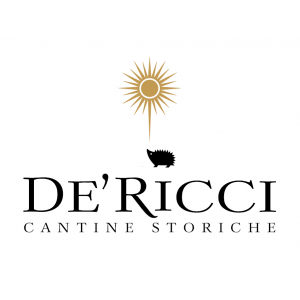 For Enrico Trabalzini the passion for vines and wine was born in 1995, when he began to replant the vineyards left by his father.
For Enrico Trabalzini the passion for vines and wine was born in 1995, when he began to replant the vineyards left by his father.From that moment on, the love for the vine blossomed. The first approaches to winemaking began only for personal curiosity.
In 2015, with his wife Antonella and their children Nicolò and Francesco, he decided to dedicate his life to wine and to the research for his personal idea of Sangiovese in Montepulciano. The goal became clear and ambitious immediately: to achieve the excellence of its products, in full respect of the territorial terroir. This is how De’ Ricci wines are born.
Today De’ Ricci is a soul with two distinct bodies, that represent together the union between historicity and a look to the future.
The aging in wooden barrels is still partly carried out inside the historic winery, under the main center of the town, “the Cathedral of Wine”, to keep the tradition of Montepulciano alive. On the other hand, the vinification takes place in the new winery: Fontecornino Estate, inaugurated in 2017.
Dei
Dei
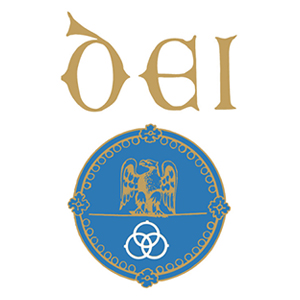 The Dei family, owner of the estate, has been winegrower in the area of Montepulciano for several decades, although from a commercial point of view the winemaking activity is recent. The first experimental bottles of Vino Nobile 1985 were released in 1988.
The Dei family, owner of the estate, has been winegrower in the area of Montepulciano for several decades, although from a commercial point of view the winemaking activity is recent. The first experimental bottles of Vino Nobile 1985 were released in 1988.The success of this vintage was the starting-point for the estate’s expansion.
Today the company comprises 61 hectares under vine, divided into five separate holdings in excellent sites: Martiena, Bossona, La Piaggia and La Ciarliana and Cervognano, from which Vino Nobile di Montepulciano and Rosso di Montepulciano are produced. Since ‘99, from the Sangiovese grapes harvested in Bossona vineyard, Dei family has been producing its Vino Nobile Riserva. On the other hand, since 2015 from the Sangiovese grapes harvested in La Piaggia vineyard, we produce Nobile Madonna della Querce, our spearhead, dedicated to Caterina’s father, Glauco Dei.
Keeping very low yields per hectare has always been the main objective of the estate, whose primary goal is the achievement of a Vino Nobile at its almost quality, enhancing the characteristics of its indigenous grape variety.
It has been completed the new underground cellar that morphologically calls to mind the shape of a shell, to celebrate the fossil composition of Bossona. The new wine cellar exploits sources of renewable energy, primarily geothermal energy, and it is completely created with the travertine
of the family.
To conclude, with vintage 2021 the estate will be certified organic.
Fanetti
Fanetti
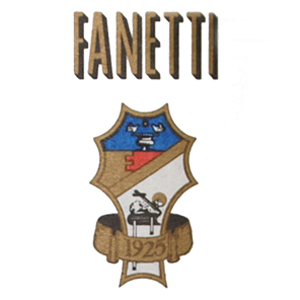 Fanetti at Montepulciano. In brief, the estate represents the banner of wine-producing Vino Nobile owes this family a debt-particularly to Adamo. He was responsible for its first rebirth, starting back in the 1920’s after the period of oblivion, during the preceding century, into which this ancient Montepulciano nectar had fallen. Moreover, it is possible to visit an ancient cellar, which dates back to Pliocene age, where it is possible to admire some fossils set in tuff rocks.
Fanetti at Montepulciano. In brief, the estate represents the banner of wine-producing Vino Nobile owes this family a debt-particularly to Adamo. He was responsible for its first rebirth, starting back in the 1920’s after the period of oblivion, during the preceding century, into which this ancient Montepulciano nectar had fallen. Moreover, it is possible to visit an ancient cellar, which dates back to Pliocene age, where it is possible to admire some fossils set in tuff rocks.The holding extends over 112 hectares, and is in the heart of the production area, within the triangle formed by Madonna della Querce, Cervognano and Ciarliana. The vineyard have good exposure, and produce wines that are robust and aged at length,as is the tradition of Montepulciano wines. Generally speaking, the lands are of mediu blend soil, with a prevalence of Pliocene-age clay. The growing system is the classical guyot, but experiments are also being made with the spurred cordon. Much care is given to the wines, and there is a minimum use of treatments. The aim of the estate is to obtain healhy and mature grapes that are suitable for producing thered wines that make up the large range produced by the estate. The sale of the wines is directed worldwide, with a particular eye on Germany, the Usa, Sweden.
Fassati
Fassati
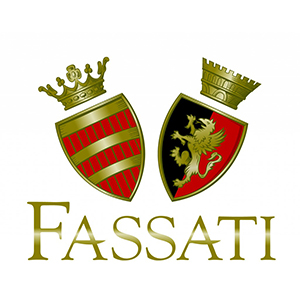 With the 2015 vintage, Della Camera brothers finally complete the objective of two generations, theirs and that of their father: that of producing Vino Nobile di Montepulciano from the grapes of their own proprietary vineyards and bottling it on their own.
With the 2015 vintage, Della Camera brothers finally complete the objective of two generations, theirs and that of their father: that of producing Vino Nobile di Montepulciano from the grapes of their own proprietary vineyards and bottling it on their own.In 2014, in fact, they acquired the Fassati estate, founded in 1913 and consisting of close of 153 acres (62 hectares), including some of the finest of the entire production zone, and added this acreage to their own 105 (42 hectares) for a total of more than 250 acres (100 hectares) of vineyards. But the 2014 vintage gave decidedly modest results, and the Della Camera brother, with a courage which some defined “mad”, decided to pursue, without compromise, the quality objectives for which they had chosen to make this investment and not bottle the Vino Nobile. In the meantime, the commitment to the vineyard work and the attention to the cellars has only increased with the realization of important restructuring work, both aesthetic and technical, starting with the aging cellars. The acquisition of approximately 2000 hectoliters (close to 53 thousand gallons) of new Slavonian oak barrels of a 50-70-100 liter capacity, guarantees that the refinement of the Vino Nobile di Montepulciano will be done in the best way as possible. Is also realised of an ample terrace within the aging cellars where tastings and encounters can be organized. The good of Della Camera family is even now among the first five cellars of Montepulciano in terms of potential production, they intend to be recognized as among the top five in terms of the quality of their wines as well.
Fattoria del Cerro
Fattoria del Cerro
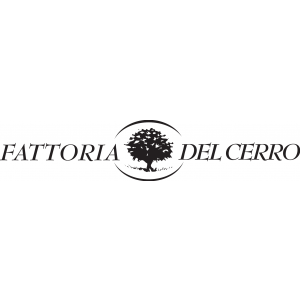 Fattoria del Cerro, with its 94 hectares of Vino Nobile di Montepulciano vineyards recorded in the register, is the largest private estate producing Vino Nobile. The spaciousness and the different exposition of the vineyards allow selecting the best grapes to make high quality wines. Vino Nobile is produced in three different versions: the regular wine Vino Nobile di Montepulciano, the Riserva and the single vineyard selection “Antica Chiusina” produced only in particular years, in which the natural vocation of the land of Montepulciano assists a better ripening of the grapes. Other wine produced: Rosso di Montepulciano, Chianti Colli Senesi, Vinsanto di Montepulciano.
Fattoria del Cerro, with its 94 hectares of Vino Nobile di Montepulciano vineyards recorded in the register, is the largest private estate producing Vino Nobile. The spaciousness and the different exposition of the vineyards allow selecting the best grapes to make high quality wines. Vino Nobile is produced in three different versions: the regular wine Vino Nobile di Montepulciano, the Riserva and the single vineyard selection “Antica Chiusina” produced only in particular years, in which the natural vocation of the land of Montepulciano assists a better ripening of the grapes. Other wine produced: Rosso di Montepulciano, Chianti Colli Senesi, Vinsanto di Montepulciano.Total farm area: 600 hectares; no rented area. Extension of vineyards: 181 hectares of which: 94 ha are recorded in the Vino Nobile di Montepulciano register, 50 ha are recorded in the Rosso di Montepulciano register, 20.40 ha are recorded in the Chianti Colli Senesi register, 0.30 ha are recorded in the Vinosanto di Montepulciano register. Other productions: 13 ha olive groves, 180 ha wood, 241 ha fields.
Composition and characteristics of the land: the soil has a Pliocene origin of medium composition that includes shells and stones. The local texture has ideal clay content. Average altitude of the vineyards: 350-450 m above sea level. Density per hectare: the most ancient vineyards have 3300 plants per hectare; new cultivations have 5000 plants per hectare. Method of growth: cordon spur.
Fattoria della Talosa
Fattoria della Talosa
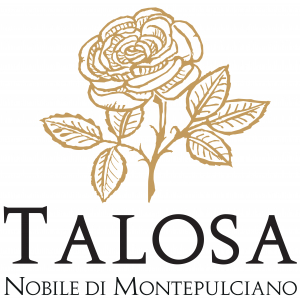 Since 1972 the estate has been owned by the Jacorossi family. Talosa was one of the first wineries in Montepulciano to undertake the quest for fine quality which brought this appellation to the heights of Tuscan and Italian winemaking. Surely it could not be otherwise for a family committed on a personal level to running the winery, surrounded by thoroughly competent assistants to ensure that all productive areas are supervised with the utmost professionalism.
Since 1972 the estate has been owned by the Jacorossi family. Talosa was one of the first wineries in Montepulciano to undertake the quest for fine quality which brought this appellation to the heights of Tuscan and Italian winemaking. Surely it could not be otherwise for a family committed on a personal level to running the winery, surrounded by thoroughly competent assistants to ensure that all productive areas are supervised with the utmost professionalism.33 ha of vineyards in one of the most beautiful areas of Montepulciano at an altitude of 350-400 m a.s.l. cultivated with scrupulous care so that the quality of the grapes guarantees that the wines will be worthy of the winery name. The fermenting area is close to the vineyards so that the harvesting and processing procedures can be carried out as rapidly and efficiently as possible. The offices and cellars devoted to ageing in small barrels and bottles are detached from the fermentation cellar in an area nearer the main roads. The main barrel-ageing cellar is in the old town centre of Montepulciano, in an underground area between two of the oldest buildings in the city: Palazzo Tarugi and Palazzo Sinatti.
Fattoria Svetoni
Fattoria Svetoni
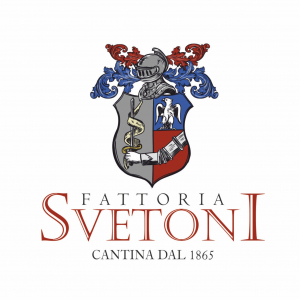 Fattoria Svetoni, established in the early XIX century in Montepulciano as a “Leopoldina”, an “ideal” farmhouse commissioned by Pietro Leopoldo, Grand Duke of Tuscany, was built from the late 1700’s until the middle 1800’s and produces wines since 1865.
Fattoria Svetoni, established in the early XIX century in Montepulciano as a “Leopoldina”, an “ideal” farmhouse commissioned by Pietro Leopoldo, Grand Duke of Tuscany, was built from the late 1700’s until the middle 1800’s and produces wines since 1865.Today, Fattoria Svetoni encompasses 36 hectars, 25 hectars of vineyards growing from 300 to 400 mt. asl. on the Gracciano and Cervognano hills, ideal area for grapes to produce Vino Nobile di Montepulciano. Here, due to cool breezes and the fluctuation between day and night temperatures, excellent sun exposure, Prugnolo Gentile (a Sangiovese grape varietal) reveals its full potential. Acquired in 2017 by Podere Rubino, Fattoria Svetoni produces Chianti Colli Senesi, Rosso di Montepulciano and
Vino Nobile di Montepulciano under historical brand name “Fattoria Svetoni”.
Gattavecchi
Gattavecchi
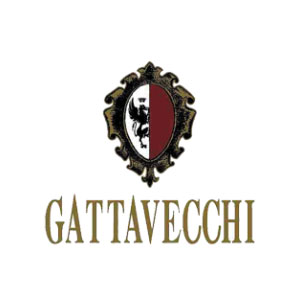 For generations, the Gattavecchi family’s name has been associated with Vino Nobile. In the historical cantina in Montepulciano, originally an Etruscan grotto that became part of the Convento dei Padri Serviti” in 1200, were aged wines for markets around the world.
For generations, the Gattavecchi family’s name has been associated with Vino Nobile. In the historical cantina in Montepulciano, originally an Etruscan grotto that became part of the Convento dei Padri Serviti” in 1200, were aged wines for markets around the world.The family acquired the historical winery, Poggio alla Sala, in 1996. The winery once belonged to the Bonci Casuccini family, which, by the early 19th century, had already achieved wide recognition for its high quality wines and oils. In the 1970’s, Poggio alla Sala was among the first Tuscan wineries to introduce new production concepts, combining innovative methods with established traditions. In this spirit of innovation, vine selections such as Parceto were developed during those years. Since then, they have become leaders in the oenological excellence that places Tuscany at the apex of the world wine market. Today is a winery that produces wines with a strong link with the territory of origin and aimed at consumers who are increasingly attentive and aware.
Godiolo Az. Agr.
Godiolo Az. Agr.
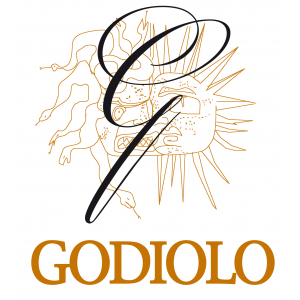 The establishment lies on the central part of one of the most ancient vine and olive growth sites which used to supply the city of Montepulciano. The vineyards: around 2,50 hectares of vineyards more than 40 years old with blackthorn, Canaiolo and violet clones which enrich the Nobile wine they produce. The blackthorn clones enhance the delicacy and fruity taste of the wines. On the other hand the presence of Malvasia and Trebbianino, locally known as “Pulcenculo” enriches and renders unique the quality and aroma of the “Vin Santo di Montepulciano”, still produced with the method handed down by our ancestors; - around 3,00 hectares of newly established vineyards. A selection of the best clones of Sangiovese produced after the 90’s has been carefully chosen, seeking a low production in favour of product quality. The soil is composed of sit-sit and clay, and sand, rich in remains from the Pliocene, which favours the production of a full-bodies wine.
The establishment lies on the central part of one of the most ancient vine and olive growth sites which used to supply the city of Montepulciano. The vineyards: around 2,50 hectares of vineyards more than 40 years old with blackthorn, Canaiolo and violet clones which enrich the Nobile wine they produce. The blackthorn clones enhance the delicacy and fruity taste of the wines. On the other hand the presence of Malvasia and Trebbianino, locally known as “Pulcenculo” enriches and renders unique the quality and aroma of the “Vin Santo di Montepulciano”, still produced with the method handed down by our ancestors; - around 3,00 hectares of newly established vineyards. A selection of the best clones of Sangiovese produced after the 90’s has been carefully chosen, seeking a low production in favour of product quality. The soil is composed of sit-sit and clay, and sand, rich in remains from the Pliocene, which favours the production of a full-bodies wine.Certified organic winery.
Guidotti
Guidotti
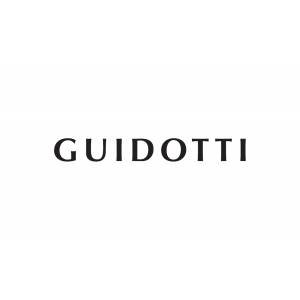 The history of the Guidotti family begins in Cervognano in 1967 when Nello, with his sons Alvaro and Angelo, bought Podere Casanova, a property of about 25 ha.
The history of the Guidotti family begins in Cervognano in 1967 when Nello, with his sons Alvaro and Angelo, bought Podere Casanova, a property of about 25 ha.The farm always had a multipurpose vocation, the cultivation of the vineyard is also accompanied by cattle breeding and cultivation of arable land for the production of fodder and cereals for feeding livestock. The first 2.5 ha vineyards were planted between 1973 and 1975 and in 2000 the planting of the new vineyards and the restructuring of the old ones (except for 1 hectare which is still in production) began to reach the current consistency of about 5 ha vineyard.
In 2015 Daniele joined the company and starts to follow all the stages of wine production, from the vineyard to the bottle, while Massimiliano takes care of the administrative part. In 2020 the company restructured the cellar and in 2021 the first 2 labels of Vino Nobile di Montepulciano Docg and Rosso di Montepulciano DOC were released.
The Guidotti family has always produced wine using traditional vines, practicing a kind of agriculture that respects and follows the peasant knowledge that listens to nature, climate and soil and adopts modern agronomic techniques. The thinning and progressive and the choice of the grapes are done manually, because, this is actually the real farm philosophy, only by bringing healthy and perfectly ripe grapes to the cellar we can obtain wines that respect and enhance the characteristics of the vine and of the territory.
I Cipressi
I Cipressi
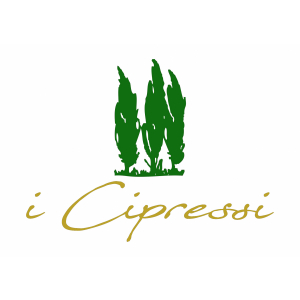 I Cipressi is family-run business born in the early 60s, when the Frangiosa family moved from Campania to Tuscany and bought a small farm surrounded by the beautiful hills of Montepulciano. At first, the company was aimed at selling grapes, then Luigi Frangiosa founded the winery in 1998 and created his own brand, which recalls Tuscany landscapes.
I Cipressi is family-run business born in the early 60s, when the Frangiosa family moved from Campania to Tuscany and bought a small farm surrounded by the beautiful hills of Montepulciano. At first, the company was aimed at selling grapes, then Luigi Frangiosa founded the winery in 1998 and created his own brand, which recalls Tuscany landscapes.The property extends over 6.5 hectares, half of which are used for the production of Vino Nobile of Montepulciano, and its primary aim is to enhance the local vineyards rich in history, such as Sangiovese, Canaiolo and Colorino.
Icario
Icario
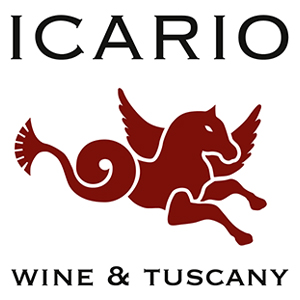 The legacy of Icario starts in 1999 and has always been based and characterized by family values of authenticity, quality, passion, love for art and design as well as respect for territory and people. In an amphitheater of vineyards blessed by a unique microclimate we grow our grapes with only natural methods.
The legacy of Icario starts in 1999 and has always been based and characterized by family values of authenticity, quality, passion, love for art and design as well as respect for territory and people. In an amphitheater of vineyards blessed by a unique microclimate we grow our grapes with only natural methods.Since 2015 Icario is part of the Dr. Helmut Rothenberger Holding in Salzburg (Austria), and has enjoyed substantial investments to develop Icario in class and excellence. Dr. Franco Bernabei, regarded as the „Patron of Sangiovese“, and creator of some of the world‘s top rated wines, proudly leads the Icario oenological team since 2018.
Grapes are handpicked and carefully selected to create wines that represents the union of the unique character of our terroir, the harmony of Sangiovese in all its expressions together with the enormous love and dedication of the Icario team.
Il Conventino
Il Conventino
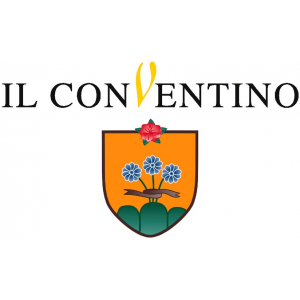 Conceived and created in the 1970s by Alfio Carpini, later acquired by the Brini family in 2003, Il Conventino winery has been producing organic wines from the vineyards of enchanting Montepulciano for over 30 years, always maintaining the harmony between man and his land. Il Conventino creates products that fully reflect the uniqueness of the terroir and the particularities of each vintage, finding its inspiration in tradition and the purity of the fruit.
Conceived and created in the 1970s by Alfio Carpini, later acquired by the Brini family in 2003, Il Conventino winery has been producing organic wines from the vineyards of enchanting Montepulciano for over 30 years, always maintaining the harmony between man and his land. Il Conventino creates products that fully reflect the uniqueness of the terroir and the particularities of each vintage, finding its inspiration in tradition and the purity of the fruit.Il Conventino is an organic farm that not only respects the environment and the ecosystem, but is also attentive to the health of those who work there and those who enjoy its fruits; in fact, its production does not use artificial products, such as pesticides, fungicides or herbicides.
What we make and offer you is the work of our hands and of nature.
Il Macchione
Il Macchione
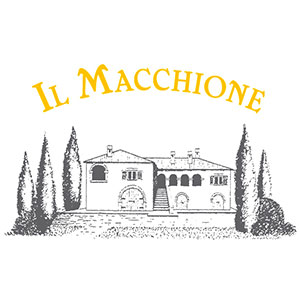 This family run wine farm is located in the heart of the Caggiole region, an area with a special vocation for the production of “Noble Wine”. The Estate extends a total area of just over seven hectares, six of which are cultivated with noble grapes. We grow almost only large Sangiovese grapes, also known as Prugnolo Gentile, with a clonal selection based on the soil composition. The age of the vines ranges from ten to fifty years.
This family run wine farm is located in the heart of the Caggiole region, an area with a special vocation for the production of “Noble Wine”. The Estate extends a total area of just over seven hectares, six of which are cultivated with noble grapes. We grow almost only large Sangiovese grapes, also known as Prugnolo Gentile, with a clonal selection based on the soil composition. The age of the vines ranges from ten to fifty years.As long as it takes is what everyday nature is teaching us here in this splendid part of Tuscany. We work respectfully of the environment. Ecological awareness means to us helping the land to preserve the maximum of its potential of life and fertility. It means bringing life to the vineyard, most importantly by helping the plant to activate the strength that puts it in synch with the sky and with the land.
The soil is fertilized annually with green manure, deposited in alternate rows with the addition of organic natural fertilizer as needed. No herbicides or other systemic products are used and the few treatments actually performed on the vines are copper- and sulphur-based. The care of the vineyard is based on an assiduous search for processes that increase the plant’s intrinsic defence systems. Thanks to the privileged position of our vineyards and the continuous contributions of our trusted technicians our ambition is to offer a unique and inimitable product which has to be the true expression of the terroir where all this process begins.
We consider ourselves to be simple custodians of these splendid places as we bring together the toils of this ancient work with the joy of conveying pleasure and an emotional experience with our wines.
Il Molinaccio di Montepulciano
Il Molinaccio di Montepulciano
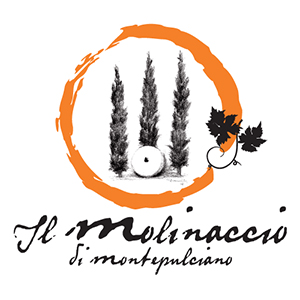 The watermill “Il Molinaccio” was already present in the old maps of the Granduchy of Tuscany. In 2012 Alessandro and Marco jointly decided to passionately upgrade the original building in a luxury resort and to start the adventure to develop a wine to be proud of.
The watermill “Il Molinaccio” was already present in the old maps of the Granduchy of Tuscany. In 2012 Alessandro and Marco jointly decided to passionately upgrade the original building in a luxury resort and to start the adventure to develop a wine to be proud of.Il Molinaccio is by and far its 3.6 ha vineyard (70% Sangiovese, 25% Merlot, 5% other local varieties) whose high-quality grapes are used for Il Golo, Rosso di Montepulciano DOC, for La Spinosa, our Vino Nobile di Montepulciano DOCG, La Poiana, Vino Nobile di Montepulciano Riserva DOCG, aged at least 12 months in French Allier oak 25HL casks and for L’Allocco, IGT Toscana, an exquisite blend between our Sangiovese and our Merlot. We are located at the Pieve di Cervognano.
Our marc (nothing else!) is distilled into Il Molinaccio, Grappa di Vino Nobile Riserva aged in barrique for two years, by the prestigious Nannoni distilleries.
We are an organic farm and all the wines presented at this Grand Tasting are organic. We installed a photovoltaic plant that covers large part of our energy needs and we purify the water of our well, making us self-sufficient.
La Braccesca
La Braccesca
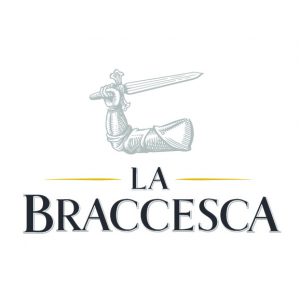 Just a few miles away from the town of Montepulciano, near the border between Tuscany and Umbria, La Braccesca estate is surrounded by a splendid territory, first Etruscan and Roman, then medieval and Renaissance. The property extends over an area where a historical farm once stood, owned by the Count of Bracci, hence the estate’s name and coat of arms: an arm covered with armor brandishing a sword.
Just a few miles away from the town of Montepulciano, near the border between Tuscany and Umbria, La Braccesca estate is surrounded by a splendid territory, first Etruscan and Roman, then medieval and Renaissance. The property extends over an area where a historical farm once stood, owned by the Count of Bracci, hence the estate’s name and coat of arms: an arm covered with armor brandishing a sword.La Braccesca estate is an expression of the two very different natures of these territories, so close yet at the same time so different: Montepulciano, the classic and prestigious area of “Vino Nobile” with vines located in three of the best-known subzones, and Cortona, recently appreciated for international grape varieties, above all Syrah. These two different “souls” represent La Braccesca style with respect for tradition, tireless research, a balance between the old and the new, the professional mastery of its work and its passion for quality.
The wines of La Braccesca estate are the result of this great combination. Vino Nobile di Montepulciano, a blend of traditional Sangiovese with a small percentage of Merlot was first produced in 1990 followed by the Vino Nobile di Montepulciano Vigneto Santa Pia, which has become Riserva since 2005. In addition, there is also Sabazio Rosso di Montepulciano, produced since 1991. From the sunniest part of the vineyard in one of Cortona’s best areas for growing premium quality Syrah, Bramasole was born in 2000 followed, in 2005, by Achelo Cortona DOC.
La Ciarliana
La Ciarliana
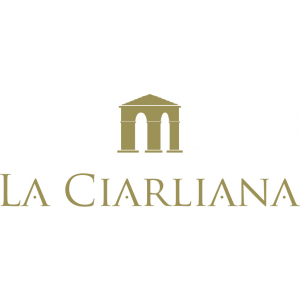 La Ciarliana embodies a lifelong dream become true. A dream that begun in 1996 with Luigi and his first Vintage of Vino Nobile and traces back to the passion he inherited through his father, Santo Pellegrino and started - before - with his grandfather Luigi in the 60’. A dream, which is now forward-looking in Matteo’s eyes.
La Ciarliana embodies a lifelong dream become true. A dream that begun in 1996 with Luigi and his first Vintage of Vino Nobile and traces back to the passion he inherited through his father, Santo Pellegrino and started - before - with his grandfather Luigi in the 60’. A dream, which is now forward-looking in Matteo’s eyes.The property has increased from the former 2 hectares to the actual 21, producing Vino Nobile di Montepulciano, Rosso di Montepulciano and Chianti. The vineyards, with a density of 5000 vines per hectare, have been planted following a careful geological and clone study.
‘Scianello is the most beautiful vineyard we own, Vigna ‘Scianello our crown jewel wine, the most authentic identity of this countryside. Elegant wines characterized by complex nose, full and smooth body: their strong and highly representative character perfectly embodies this unique terroir. They amazingly tell the history, the culture, the tradition of Montepulciano in the most attentive expression of the Sangiovese grape.
Maniacally respectful of the environment, we only do focused, planned and careful treatments in the fields. Only the most innovative and noninvasive technologies are used to prevent the pathogens. We conduct the sexual confusion in our vineyards and methods of integrated pest management.
La Combàrbia
La Combàrbia
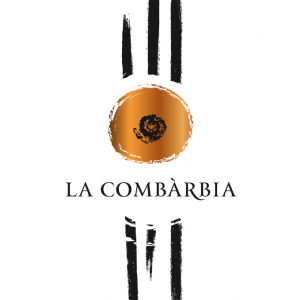 Our farm was born at the beginning of the sixties, on the initiative of Novilio Mariani, who settled with his family in Cervognano and precisely in what in the ancient cadastral maps is referred to as “Villa Elvira”, he dedicated himself to the production of wine. The area of Cervognano is in fact known since ancient times for its natural predisposition to the cultivation of the wine.
Our farm was born at the beginning of the sixties, on the initiative of Novilio Mariani, who settled with his family in Cervognano and precisely in what in the ancient cadastral maps is referred to as “Villa Elvira”, he dedicated himself to the production of wine. The area of Cervognano is in fact known since ancient times for its natural predisposition to the cultivation of the wine.In 2016, the passion for this activity pushes Gabriele Florio, acquired nephew of Novilio, to take over the company with the purpose of continuing the business of the founder, but also to renew: for example the new headquarters of the winery, or the purpose of taking advantage of the new and more modern techniques of vine cultivation and winemaking.
Combarbia literally means a crossroads, a place that is where multiple roads come together and from which they branch off, giving the opportunity to those who are in this confluence to choose the path to follow. But the word “combarbia” also has a deeper meaning: when the farmers of the village said “let’s go to combarbia” it meant that they met to spend a carefree evening in company, conversing between them and drinking some glasses of our good Tuscan wine.
La Piccola Cantina
La Piccola Cantina
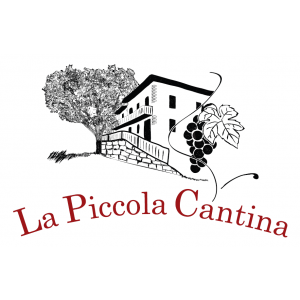 In the heart of the beautiful countryside of south-east Tuscany lies the family Del Buono's farm called "La Piccola Cantina".
In the heart of the beautiful countryside of south-east Tuscany lies the family Del Buono's farm called "La Piccola Cantina". Its vineyards extend over the hills of Cervognano, a hamlet of the town of Montepulciano in the province of Siena. The characteristics of this precious land, rocky and hilly area situated 350 meters above sea level, promote the production of red wines structured.
"La Piccola Cantina" was born thanks to the hard work of Ghino and Miriana Del Buono in 1960 who are dedicated to the production and direct sale of Red Wine and White Wine Table. In 2009 his son Claudio decides to expand production and to proceed with the bottling of the wine. Since that date, "La Piccola Cantina" selecting the best grapes of Sangiovese and Cabernet, offers the famous Vino Nobile and the great Rosso di Montepulciano. The first is bottled after three years of aging in oak barrels, the second a year later.
Le Bèrne
Le Bèrne
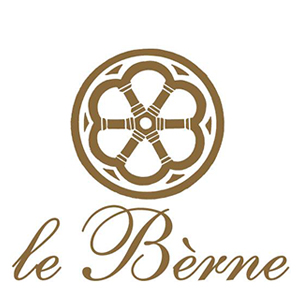 Podere Le Bèrne belongs to the Natalini Family. At the beginning of the 1960s Egisto Natalini and his son Giuliano decided to vinify the grapes of their vineyards and this was the beginning of a familiar production aimed at making a very traditional Tuscan wine. Since 1995 Giuliano’s son, Andrea, whose job is land surveyor and wine specialist, has started to attend to the wine production together with the wellknown oenologist Paolo Vagaggini. They are dealing with the improvement of farming experimentation and of production techniques. The name Le Bèrne derives from the late Etruscan term Verna or Verena, meaning “hillock”.
Podere Le Bèrne belongs to the Natalini Family. At the beginning of the 1960s Egisto Natalini and his son Giuliano decided to vinify the grapes of their vineyards and this was the beginning of a familiar production aimed at making a very traditional Tuscan wine. Since 1995 Giuliano’s son, Andrea, whose job is land surveyor and wine specialist, has started to attend to the wine production together with the wellknown oenologist Paolo Vagaggini. They are dealing with the improvement of farming experimentation and of production techniques. The name Le Bèrne derives from the late Etruscan term Verna or Verena, meaning “hillock”.The farm occupies about 20 hectares in the area of Cervognano, 12 hectares of which are covered by vineyards. The lands originated in Pliocene and they contain shells and stones. They are situated in a slightly hilly area and their altitude of 350 metres above sea-level assures a perfect microclimate for the production of well structured red wines.
The most important cultivated species of vine is Sangiovese, which is called Prugnolo Gentile in Montepulciano. It is the basic vine in Vino Nobile di Montepulciano DOCG and in Vino Rosso di Montepulciano DOC. Other vines cultivated in the farm are Colorino and Mammolo, also typical of this area and very important for the production of Vino Nobile.
Le Bertille
Le Bertille
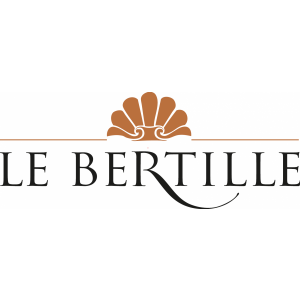 The farm, Azienda Agricola “Le Bertille” in Montepulciano is composed of the Bertille, Casella and San Pietro estates and covers around 22 hectares. Our vineyard’s extention is 14 ectares situated in the west and southwest area of Montepulciano, below the wonderful Tempio di San Biagio. The soil composition is mainly tufa-clay with a variety of exposures. The estate includes a centuriesold olive grove and a beautiful lake, an oasis for migrating herons.
The farm, Azienda Agricola “Le Bertille” in Montepulciano is composed of the Bertille, Casella and San Pietro estates and covers around 22 hectares. Our vineyard’s extention is 14 ectares situated in the west and southwest area of Montepulciano, below the wonderful Tempio di San Biagio. The soil composition is mainly tufa-clay with a variety of exposures. The estate includes a centuriesold olive grove and a beautiful lake, an oasis for migrating herons.The grape varieties cultivated, traditional to the Montepulciano area, are Sangiovese (Prugnolo Gentile), Clilegiolo, Colorino and Canaiolo, besides a small part of merlot. Accurate management of the vineyards, summer pruning, bunch thinning and selective harvesting allow for a limited but high quality production.
Lombardo
Lombardo
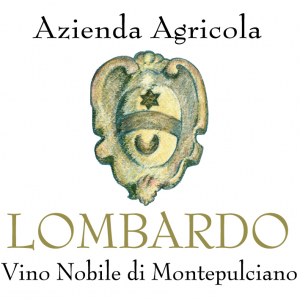 Situated in a beautiful location on the hills overlooking Montepulciano is the Azienda Lombardo. Founded in 1972 is constituted by over 32 hectares vineyards that are divided into different zones: Caggiole, Confino and Gracciano.
Situated in a beautiful location on the hills overlooking Montepulciano is the Azienda Lombardo. Founded in 1972 is constituted by over 32 hectares vineyards that are divided into different zones: Caggiole, Confino and Gracciano.One cellar is located at Gracciano S.S. 326, which is the department for vinification and bottling, the other cellar is in via Umbria, situated in a beautiful environment within a XVIII century family Villa where the wine is aged and matured in the newly refurbished historical cellars.
The farm has been deeply transformed in the last decade and believes it will now be perfectly balanced between new technologies and the respect of time-honoured tradition. The production of the Azienda Lombardo consists of: Vino Nobile di Montepulciano DOCG, Vino Nobile di Montepulciano “Riserva” DOCG, il cru Vino Nobile di Montepulciano “Poggio Saragio” DOCG, Rosso di Montepulciano DOC, Chianti Colli Senesi DOCG, Vinsanto di Montepulciano DOC, Grappa Nobile.
Lunadoro Soc. Agr. SRL
Lunadoro Soc. Agr. SRL
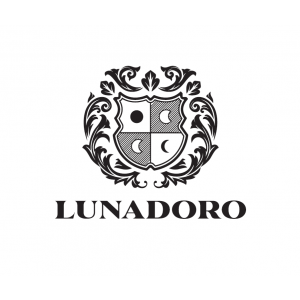 Lunadoro estate is based in Valiano di Montepulciano, and extends over an area of 40 ha on a ridge, 12 of which are vineyards, mostly Sangiovese, here called “Prugnolo Gentile”. This beautiful hilly stretch of Val di Chiana senese is perfectly located, since the climate ensures the gradual and full ripening of the bunches, thereby guaranteeing the production of excellent wine. In 2006 the wine cellar was completely renovated and modern vinification technologies were implemented together with traditional oak casks for the aging process.
Lunadoro estate is based in Valiano di Montepulciano, and extends over an area of 40 ha on a ridge, 12 of which are vineyards, mostly Sangiovese, here called “Prugnolo Gentile”. This beautiful hilly stretch of Val di Chiana senese is perfectly located, since the climate ensures the gradual and full ripening of the bunches, thereby guaranteeing the production of excellent wine. In 2006 the wine cellar was completely renovated and modern vinification technologies were implemented together with traditional oak casks for the aging process.The vine training is the spurred cordon system. Every single step of the production and selection process in the vineyards is carried out manually, in perfect harmony with the environment: from pruning to the choice of the best bud, from the control of the vegetation to the thinning out of the bunches. The harvest is carried out only manually and during the destemming, the grapes are selected to use only the best quality.
Manvi
Manvi
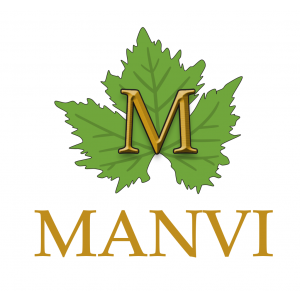 Manvi winery is a small family run winery with about 7 Ha of vineyards in production. Around 20.000 and 25.000 bottles of wine are produced annually. Since 2003 all wines produced at this winery have been Certified Organic. The vineyards are spread
Manvi winery is a small family run winery with about 7 Ha of vineyards in production. Around 20.000 and 25.000 bottles of wine are produced annually. Since 2003 all wines produced at this winery have been Certified Organic. The vineyards are spreadin 2 different areas, one in the south part and one in north at different altitudes, producing distint flavours and characteristics in the wines.
The owners take part in each and every step of the process to ensure integrity and quality. Most of the steps in the process are manual with minimal automation and usage of machines. Manvi's philosophy is to produce high quality wines that truly represent the terroir using grapes that are also cultivated organically with a great deal of respect to the environment.
Manvi wines are the result of the efforts of an Indian born Canadian / Swiss couple that gave up their successful global banking careers to follow their passion for wine and live their dream of producing wine in Tuscany.
Marchesi Frescobaldi
Marchesi Frescobaldi
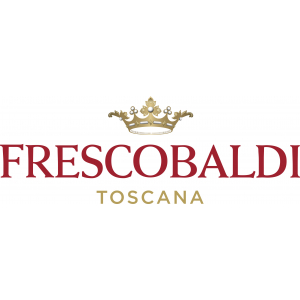 Lying amidst the gently-rolling hills between the Val di Chiana and the Val d’Orcia, Tenuta Calimaia covers some 70 hectares in Cervognano, one of the areas historically dedicated to producing Vino Nobile di Montepulciano. The vineyards, forming a circlet on the Monteliscione hillslope at an elevation of about 300 metres, are planted in Pliocene-era clay soils that are nutrient-poor, ideal conditions for Prugnolo Gentile, as Sangiovese is traditionally named in these parts. Abundant clay content and warm, low elevation temperatures yield a firmly structured, powerful Vino Nobile, rich in tannins and with significant cellarability.
Lying amidst the gently-rolling hills between the Val di Chiana and the Val d’Orcia, Tenuta Calimaia covers some 70 hectares in Cervognano, one of the areas historically dedicated to producing Vino Nobile di Montepulciano. The vineyards, forming a circlet on the Monteliscione hillslope at an elevation of about 300 metres, are planted in Pliocene-era clay soils that are nutrient-poor, ideal conditions for Prugnolo Gentile, as Sangiovese is traditionally named in these parts. Abundant clay content and warm, low elevation temperatures yield a firmly structured, powerful Vino Nobile, rich in tannins and with significant cellarability.Tenuta Calimaia pays tribute to the role that the Frescobaldi family played in extending the prestige and power of Florence through its activities within the city’s ancient craft guilds; that mission of promoting the image and power of our local territory still guides us today in our winemaking. The name Calimaia comes from the oldest of those guilds, the Calimala, dedicated to merchants dealing in textile finishing and commerce.
Metinella
Metinella
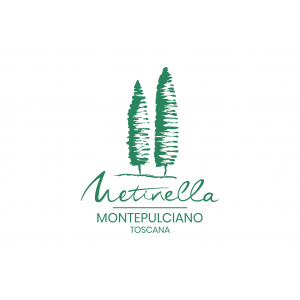 Metinella, a wine estate based in the heart of a wine-growing area consecrated to its renowned noble Tuscan wine, the so called Vino Nobile di Montepulciano, is surrounded by gentle scope arising from Valdichiana valley.
Metinella, a wine estate based in the heart of a wine-growing area consecrated to its renowned noble Tuscan wine, the so called Vino Nobile di Montepulciano, is surrounded by gentle scope arising from Valdichiana valley.With its 21 hectare vineyards, the estate benefits from optimally sunkissed and well-ventilated hillsides for Sangiovese, Mammolo, Colorino, Canaiolo grape varieties togrow with their excellent flavours and body. Alongwith the olive grove, the vineyards, lying at a heigh to f 350 meters above sea level and beyond, growon sandy loam soils that owe their origin to the Pliocene epoch. Accordingly, our vineyards and olive oil grove are grown on a day-to-day basis and each stage occurs just at the optimum time following the natural cycle of the seasons. The amount of buds is also duly set through pruning; infact, its selection starts from inflorescence, harvesting of grapes occurs by hand and at different intervals of time after analyzing carefully the stages of the grape berry maturation, allowing the grapes to be picked at the time of their best phenolic maturation. Inspired by the generosity of nature and the excellence of its fruits, our primary and only choice is oriented to work respectfully for these places and their traditions, in absolute harmony with them following environmentally beneficial methods and avoiding any use of chemicals.
The main installations in the winery during 2016 were: a brand-new temperature and humidity unit and the exchange of all oak barrels, sure that 25 and 50 litres capacity barrels are the best option for resting and ageing our wines.
Montemercurio
Montemercurio
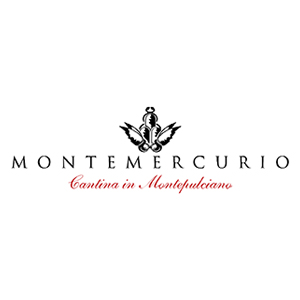 In the heart of Montepulciano under the S. Biagio Dom, it is located the vineyard where we grow, with great care, this elegant wine called Messaggero, Messenger of the Tuscan essence.
In the heart of Montepulciano under the S. Biagio Dom, it is located the vineyard where we grow, with great care, this elegant wine called Messaggero, Messenger of the Tuscan essence.What makes Montemercurio unique is the desire which guides the productive cycle: this desire is represented in the will of keeping our territory, the hills of Montepulciano, as unaltered as possible, without modifying aromas or characteristic perfumes. To keep the original taste of the grape and to process it according to tradition is our philosophy. That is why we take care of every single detail during the wine making process, from the handmade harvest, passing trough fermentation, to arrive to the ageing in traditional Tuscan casks, which are able to exalt natural flavours and to come off tastes, today unfortunately standardized.
Tradition, great care during the process and respect of the territory. These are the ingredients which make Montemercurio wines unique and surely one of the most representative of the Montepulciano area.
Nottola
Nottola
 Anterivo Giomarelli bought the estate at the end of eighties. The estate was constituted by the nineteenth-century Villa Bracci surrounded by typical Tuscan farmhouses and ten hectares of vineyards. With passion and conviction he planted during the years ten more hectares of vineyards and made an important renovation of all buildings and the construction of new wine cellar.
Anterivo Giomarelli bought the estate at the end of eighties. The estate was constituted by the nineteenth-century Villa Bracci surrounded by typical Tuscan farmhouses and ten hectares of vineyards. With passion and conviction he planted during the years ten more hectares of vineyards and made an important renovation of all buildings and the construction of new wine cellar.Today Nottola is composed from 20 hectares of vineyards and 1.700 square meters of wine cellar. Essential since the begin the partnership with the important wine maker Mr. Riccardo Cotarella, he created a definite character in wines, exalting the indissoluble relation with our important land.
Palazzo Vecchio
Palazzo Vecchio
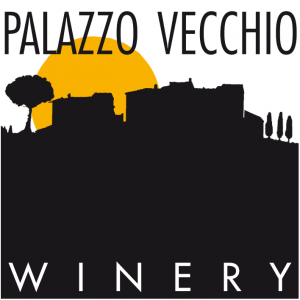 In the 1950s Palazzo Vecchio was bought by Count Riccardo Zorzi, who worked passionately to revive the local wine-making tradition and culture, but it was not until 1980 that Marco Sbernadori, along with his wife Maria Alessandra Zorzi, embarked on an ambitious project that in 1990 would lead to the production of the first bottle of Vino Nobile di Montepulciano. Already at his birth the wine displayed a good structure, the fruit of land that is particularly well suited to grape-growing, as described in all the soil studies.
In the 1950s Palazzo Vecchio was bought by Count Riccardo Zorzi, who worked passionately to revive the local wine-making tradition and culture, but it was not until 1980 that Marco Sbernadori, along with his wife Maria Alessandra Zorzi, embarked on an ambitious project that in 1990 would lead to the production of the first bottle of Vino Nobile di Montepulciano. Already at his birth the wine displayed a good structure, the fruit of land that is particularly well suited to grape-growing, as described in all the soil studies.Located on the top of a hill and surrounded by vineyards, Palazzo Vecchio commands a 360° view of countryside that is acclaimed for its beauty. It enjoys a unique environmental situation, not only due to the position of its vineyard and the recognized quality of its soil, but also for its particularly favorable climatic conditions with light breezes that carries the grapes, keeping them perfectly healthy.
Podere Casa al Vento
Podere Casa al Vento
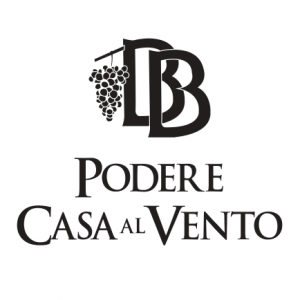
In 2003 (the vineyards were planted in 2001 and 2014) the farm was founded with the owner Sonia Buracchi, manages a wine that begins with the cultivation of wine and olive oil up the commercial of the bottles wine. From 2014, Paolo and Giulia, Sonia’s child, work together in the family activity with synergy and strength and they opened in the 2015 a new activity, the agriturismo. Since 2014, the quantity of wine vinified and bottled were around few thousand bottles, now the farm has a production of 17000 bottles for year.
The company philosophy is: “love, traditions and work keep our family together”. The company wants to improve itself in all aspects: structural, productive and commercial. In the 2019 have been sold the new products, the rosato and igt, with the enthusiasm and want to make our wines known in the world.
Podere Casanova
Podere Casanova
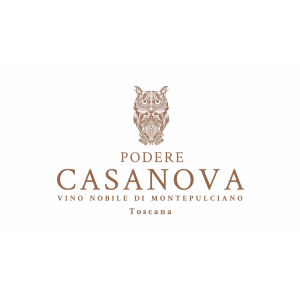 Susanna and her husband Isidoro are the owners of a wonderful 15-hectare vineyard on the eastern side of the region, where the hills stretch out and look towards Umbria, where Lake Trasimeno and the Sibillini mountains are located. They carry on their interpretation of the authenticity of the Wines of Montepulciano, with a natural and personal approach. Over the years, their pride has been in taking care of everything: cultivating their Sangiovese and welcoming guests.
Susanna and her husband Isidoro are the owners of a wonderful 15-hectare vineyard on the eastern side of the region, where the hills stretch out and look towards Umbria, where Lake Trasimeno and the Sibillini mountains are located. They carry on their interpretation of the authenticity of the Wines of Montepulciano, with a natural and personal approach. Over the years, their pride has been in taking care of everything: cultivating their Sangiovese and welcoming guests. Podere della Bruciata
Podere della Bruciata
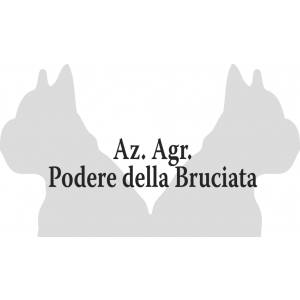 Podere della Bruciata has always been oriented towards the realisation of a close to nature and sustainable winemaking process, therefore based on the production of excellent wines, which are at the same time respectful of the environment, natural resources and the consumer, without using pesticides, weeding chemicals or other chemical products during the vinification, as well as the avoidance of invasive enological practices. The grapes are carefully selected, with a total production of around 50 quintals per hectare. The fermentation process happens in a natural and spontaneous way thanks to the presence of natural and indigenous yeasts. In order to maintain all the organoleptic qualities, the wine is not filtered. The use of sulphur is kept at a minimum throughout the whole range.
Podere della Bruciata has always been oriented towards the realisation of a close to nature and sustainable winemaking process, therefore based on the production of excellent wines, which are at the same time respectful of the environment, natural resources and the consumer, without using pesticides, weeding chemicals or other chemical products during the vinification, as well as the avoidance of invasive enological practices. The grapes are carefully selected, with a total production of around 50 quintals per hectare. The fermentation process happens in a natural and spontaneous way thanks to the presence of natural and indigenous yeasts. In order to maintain all the organoleptic qualities, the wine is not filtered. The use of sulphur is kept at a minimum throughout the whole range.Our company has been certified organic since 2001. A reality on a human scale, that produces roughly 25.000 bottles per year between Chianti, Rosso di Montepulciano and Nobile Montepulciano. The main grape variety is Sangiovese, sided with little patches of land of Colorino, Canaiolo, Pugnitello.
Podere Lamberto
Podere Lamberto
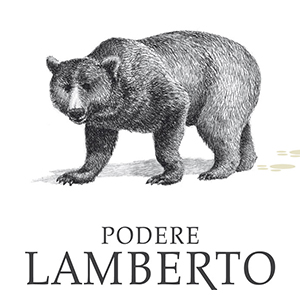 The total area of our vineyards is about 2 hectares, divided into two distinct plots: the “historic” vineyard of Podere Lamberto and the new plant of more recent construction. The first extends on the east side, on an average slope on a terrain characterized by the regularity of ventilation present at every precious temperature range, a phenomenon particularly useful in the morning, when, together with the first sun, it quickly erases any excess humidity on leaves and bunches. Thanks to this phenomenon, our “historic” vineyard is particularly protected from mold and rot in the advanced stage of ripening, as well as from the attack of the most common plant pathologies of the vine throughout the growing season. This peculiarity is a very advantageous element considering that we have chosen the organic cultivation method. The planting layout is the classic one with a 3 m wide row and 1.80 m distance between the logs.
The total area of our vineyards is about 2 hectares, divided into two distinct plots: the “historic” vineyard of Podere Lamberto and the new plant of more recent construction. The first extends on the east side, on an average slope on a terrain characterized by the regularity of ventilation present at every precious temperature range, a phenomenon particularly useful in the morning, when, together with the first sun, it quickly erases any excess humidity on leaves and bunches. Thanks to this phenomenon, our “historic” vineyard is particularly protected from mold and rot in the advanced stage of ripening, as well as from the attack of the most common plant pathologies of the vine throughout the growing season. This peculiarity is a very advantageous element considering that we have chosen the organic cultivation method. The planting layout is the classic one with a 3 m wide row and 1.80 m distance between the logs.The ampelographic base of the vineyard is made up of Prugnolo Gentile (Sangiovese) about 80%, Canaiolo nero, Mammolo and Colorino.
The harvest period, at an altitude of about 550 m. above sea level, generally coincides with the second week of October for Sangiovese and a couple of weeks before for Merlot.
Poderi Sanguineto I e II
Poderi Sanguineto I e II
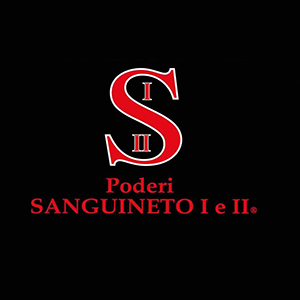 The Poderi Sanguineto company was established back in 1958, when Federico Forsoni decided to buy the estates located between Montepulciano and Acquaviva in the province of Siena. He immediately fell in love with this corner of paradise, made up of 35 hectares of land on the hills of Acquaviva where he decided to move. The company currently has about 50 hectares of which 6 hectares are vineyards.
The Poderi Sanguineto company was established back in 1958, when Federico Forsoni decided to buy the estates located between Montepulciano and Acquaviva in the province of Siena. He immediately fell in love with this corner of paradise, made up of 35 hectares of land on the hills of Acquaviva where he decided to move. The company currently has about 50 hectares of which 6 hectares are vineyards.He devoted himself heart and soul to his farm, raising cattle, producing cereals and a small amount of wine for family use, until his death in 1983. From then on, the farm passed into the hands of his daughter Dora, the youngest of nine children. Born and raised in the country, it was only after various work experiences that she decided to return to the family farm, discovering that her bond with the land had never disappeared. Having learned the art of winemaking from her father, she began to take over the reins of the farm, transforming it over time into a wine production business. Dora dedicated herself to the cultivation of native grape varieties such as Prugnolo Gentile, Mammolo, Malvasia, Trebbiano, Grechetto and Canaiolo Nero. Dora's strong passion and determination in cultivating the land, and her love for her own wine, are passed on to Patrizia, who involves her in the same passion. One dedicated to the countryside, the other dedicated to the management of the winery, they form a close-knit and cohesive team that allows Poderi Sanguineto to grow, even going beyond the borders of Italy. If in the past sales were managed only and exclusively by word of mouth for a local market, today Poderi Sanguineto almost completely exports its products, having won over time important collaborations that have allowed it to conquer the markets of Japan, the United States, England, Peru, Belgium, Canada, Germany, France, Switzerland, Holland and many others.
Poliziano
Poliziano
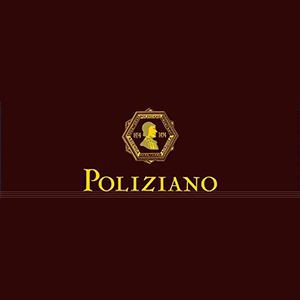 My family’s first contact with the world of viniculture was in 1961 when my father, Dino Carletti, bought 22 hectares of land in the Comune of Montepulciano. He planted the first specialty vineyards in the region. The inspiration for this investment came more from the heart than from economic motives. It was dictated by my father’s desire to maintain a living contact with the place of his youth and the culture of his origins. Apart from its immediate impact on the direction of the company, this bond had a fundamental influence on my formative decisions, compelling me to take a degree in agriculture in Florence in1978. At the end of 1980, due to the economic crisis and the decline in consumption, I took on the challenge of directing my own company, bringing to it a modern production philosophy based on my personal vision of agriculture. Passion for the art of making wine immediately took hold and inspired me to learn about the most advanced techniques of international viticulture and oenology. This led to the opening of a dialogue with the specialists of this field.
My family’s first contact with the world of viniculture was in 1961 when my father, Dino Carletti, bought 22 hectares of land in the Comune of Montepulciano. He planted the first specialty vineyards in the region. The inspiration for this investment came more from the heart than from economic motives. It was dictated by my father’s desire to maintain a living contact with the place of his youth and the culture of his origins. Apart from its immediate impact on the direction of the company, this bond had a fundamental influence on my formative decisions, compelling me to take a degree in agriculture in Florence in1978. At the end of 1980, due to the economic crisis and the decline in consumption, I took on the challenge of directing my own company, bringing to it a modern production philosophy based on my personal vision of agriculture. Passion for the art of making wine immediately took hold and inspired me to learn about the most advanced techniques of international viticulture and oenology. This led to the opening of a dialogue with the specialists of this field.Actually the total surface of my estate is 240 hectars, 120 of which are of DOC and DOCG vineyards. My objective for the future is to consolidate the distinctive character of the wines that will be produced from my new vineyards. To this end, I am dedicated to a continual and passionate search for every possibility of improving the quality of Poliziano’s wines.
Dr. Federico Carletti.
Priorino
Priorino
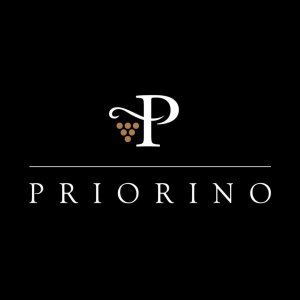 Passion, quality and handicraft, these are the three key words for Cantina Priorino. A passion for good wine was the incentive which saw the birth of Priorino in 2011. A passion which lead Jacopo to build his own winery, brick by brick, with the help of his family’s construction business. Quality is the distinctive trait which Cantina Priorino follows. Nothing is left to chance. Every detail is hand checked with knowledge and method. Using treatments which are as natural as possible, Jacopo and his collaborators take care of every step from the selection of the vine to the bunch and the grapes, only producing quality wines. Just like a craftsman’s workshop, every wine is cared for in the finest of detail, the details which make the difference and give a touch of originality. Every bottle is a unique and precious creation, the result of careful selection, a passion for the job and good wine.
Passion, quality and handicraft, these are the three key words for Cantina Priorino. A passion for good wine was the incentive which saw the birth of Priorino in 2011. A passion which lead Jacopo to build his own winery, brick by brick, with the help of his family’s construction business. Quality is the distinctive trait which Cantina Priorino follows. Nothing is left to chance. Every detail is hand checked with knowledge and method. Using treatments which are as natural as possible, Jacopo and his collaborators take care of every step from the selection of the vine to the bunch and the grapes, only producing quality wines. Just like a craftsman’s workshop, every wine is cared for in the finest of detail, the details which make the difference and give a touch of originality. Every bottle is a unique and precious creation, the result of careful selection, a passion for the job and good wine.Situated in Abbadia di Montepulciano and immersed among six hectares of vineyard, Cantina Priorino is a modern winery. #e passion which guides Priorino to producequality Vino Nobile with an attention to craftsmanship is what has allowed a dream to come true.
Raspanti
Raspanti

Salcheto
Salcheto
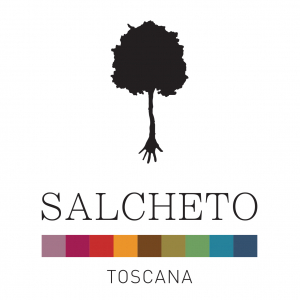 Salco means the willow tree in the ancient Tuscan language, an important plant for wine territories throughout history as its branches were used to bind and tie vines. Salcheto is the name of the stream, which springs at the foot of the town of Montepulciano and winds through a valley where willows abounded. This stream is the boundary of our organic and biodynamic estate, rooted in the historic district of Vino Nobile, in the southeast of the Siena province of Tuscany. The willow tree, a species that we continue to replant at the winery, also contributes to the winery’s energy independence, is today prominently represented in our logo as part of our commitment to environmental sustainability.
Salco means the willow tree in the ancient Tuscan language, an important plant for wine territories throughout history as its branches were used to bind and tie vines. Salcheto is the name of the stream, which springs at the foot of the town of Montepulciano and winds through a valley where willows abounded. This stream is the boundary of our organic and biodynamic estate, rooted in the historic district of Vino Nobile, in the southeast of the Siena province of Tuscany. The willow tree, a species that we continue to replant at the winery, also contributes to the winery’s energy independence, is today prominently represented in our logo as part of our commitment to environmental sustainability.More than thirty years after its inception, the company expresses itself through an innovative image that reflects its path and the goals achieved: terroir and sangiovese oriented wines focused on drinkability and aromatic accuracy, with winemaking that is sulfite free and uses indigenous yeasts, with the wines in the new “Obvius” label, Red, Rosé, White and Gold Yellow made of grapes only; an “off-grid” cellar (energy independent) and an integrated environmental estate management model (GHG, Water, Biodiversity) which has achieved world premiere in indexing of Carbon and Water Footprint; a newly designed bottle, the “Bordolese Toscanella”, whose elegant shape is reminiscent of the ancient history of Tuscan wine, while also being the lightest and most
ecological bottle available on the market. This journey culminates where it was born, into Salco, the name of the estate most mature vineyard and a symbol of Salcheto’s wines excellence with its Sangiovese “cru”, the vintage and the old vines one.
Serraglio
Serraglio
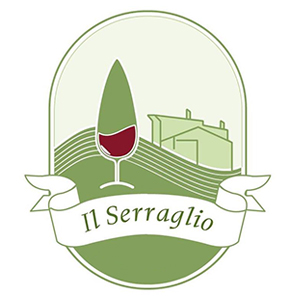 Our story begins a short time later, in 1978, when Roberto and Emanuela signed the purchase contract for the Serraglio farm. Slowly, over the years, with great effort and suffering, Roberto and Emanuela got the farm back on its feet.
Our story begins a short time later, in 1978, when Roberto and Emanuela signed the purchase contract for the Serraglio farm. Slowly, over the years, with great effort and suffering, Roberto and Emanuela got the farm back on its feet.The vineyard from which our wine Serraglio originates is located a couple of kilometers from the historic center of Montepulciano, at an altitude of 580 meters above sea level. It is a small vineyard, only two hectares, facing east and is illuminated by the sun from the early hours of the morning.
The vineyard, planted in the year 2000, is made up of 95% Sangiovese vines and 5% of the little known Mammolo.
In 2004 we produced our first wine, the first Nobile by Serraglio. Simply: Serraglio. The label was created on the fly, it had to be ready immediately and we chose that black patch with the vertical name that is still the basis of the labels of our Nobile di Montepulciano DOCG today.
2005 was a sensational vintage and our second wine was chosen to make a Riserva. Even today, the Serraglio Riserva 2005 is an extraordinary wine, and one of the best vintages ever. This was followed by the Riserva 2007, incensed at the Grand Tasting de Bordeaux in 2009, by Thierry Desseauve, the Riserva 2011 and, now the Riserva 2017. Many excellent vintages of Nobile were produced too – among which we like to recall 2008, 2010 and 2015, above all others.
Tenuta Abbadia Vecchia
Tenuta Abbadia Vecchia
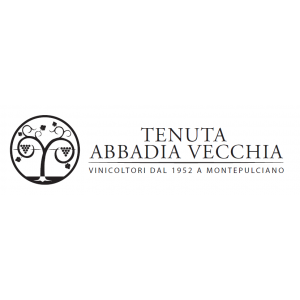 The history of the Farm Tenuta Abbadia Vecchia began in 1952, when the current owner’s greatgrandfather bought Podere Abbadia Vecchia. Since those years the owners Pierantozzi did their best for the development and experimentation of the most innovative agricoltural technologies and with this in mind, the family started at the end of ‘60s the production of wine. Nowdays the Company is managed by the fourth generation of Pierantozzi’s family, Pierfrancesco and Elisabetta.
The history of the Farm Tenuta Abbadia Vecchia began in 1952, when the current owner’s greatgrandfather bought Podere Abbadia Vecchia. Since those years the owners Pierantozzi did their best for the development and experimentation of the most innovative agricoltural technologies and with this in mind, the family started at the end of ‘60s the production of wine. Nowdays the Company is managed by the fourth generation of Pierantozzi’s family, Pierfrancesco and Elisabetta.The extension of the area planted with vinesyards is about 35 ectares, mainly placed in the territory around Montepulciano and coltivated according to the guidelines of organic farming. The main vine variety is Sangiovese, in the biotype of Prugnolo Gentile, the cornerstone wine of the Company and in particular Vino Nobile di Montepulciano, made from Sangiovese grapes and aged in the historical cellars of the Company. They also grow international red and white berries vine varieties, as a sign of continuous process of experimentation and innovation, a common thread in the history of the family and their winery.
Tenuta di Gracciano della Seta
Tenuta di Gracciano della Seta
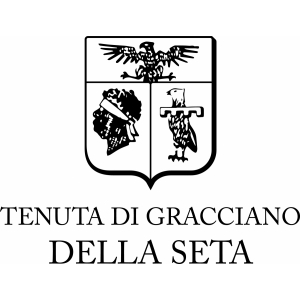 The della Seta Ferrari Corbelli family has owned the estate since mid 1900s, when the property was inherited from their relatives Svetoni who fonded the company at the beginning of the 1800s.
The della Seta Ferrari Corbelli family has owned the estate since mid 1900s, when the property was inherited from their relatives Svetoni who fonded the company at the beginning of the 1800s.The estate, of a total extension of 70 hectares, surrounds the villa and the park with an Italian style garden. Vineyards stand on the silty clay soil of Gracciano hills, one of the historical crus of Montepulciano. Gracciano della Seta is one of the historical estates of Montepulciano. In 1864 the Vino Nobile di Montepulciano of the Svetoni cellars (now Gracciano della Seta) was awarded a prize at the international Fair of Turin and a few bottles of these old vintages are still kept. After many years of finishing in the bottle, the Vino Nobile made by the Tenuta di Gracciano expresses its full potential with a complex nose and a structure that becomes more and more elegant and harmonic. The varietals that go into the blend are the classic ones of Vino Nobile with a large percentage of Prugnolo Gentile and with a small quantity of other red grapes.
In 2011 Marco, Vannozza and Galdina della Seta became the new owners (the previous owner having been their grandmother Mrs Piera Mazzucchelli) supported by the father Giorgio. They started this new adventure with great enthusiasm: the new vinification cellar has been completed, while the ageing in wood of the wines will still take place in the historical cellars of the villa. The philosophy of the winery has always been based on the respect for tradition and for the environment. In fact no chemical fertilizers nor weed killers are used and the wines are made so to express the terroir as much as possible through minimum handling procedures in the cellar and natural practices in the vineyard.
The company is organic since 2018.
Tenuta di Poggio Uliveto - Conti Borghini Baldovinetti
Tenuta di Poggio Uliveto - Conti Borghini Baldovinetti
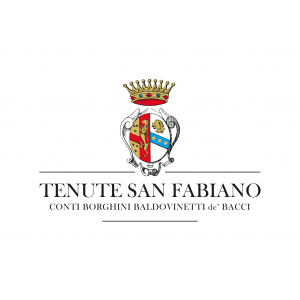 Tenuta Poggio Uliveto in Montepulciano covers over 20 hectares (18 of vineyards), perfectly exposed to southeast and overlooking the Valdichiana, located in the geological zone of the Pieve called “Argiano”.
Tenuta Poggio Uliveto in Montepulciano covers over 20 hectares (18 of vineyards), perfectly exposed to southeast and overlooking the Valdichiana, located in the geological zone of the Pieve called “Argiano”.Since 2000, the estate is owned by the Earls Borghini Baldovinetti de’ Bacci and is part of the historic Tenute San Fabiano wineries, together with the other estates, Tenuta San Fabiano and Tenuta of Campriano in the Chianti area in Arezzo, besides Tenuta of Sinalunga in the Chianti Colli Senesi. The soil composition is primarily of marine origin, consisting in sands and fossil clays, located at an altitude of about 300 meters a.s.l. The cultivation of the vines is by spurred cordon training method, on an average of 5.000 vines per hectare. Prugnolo Gentile vines makes up 80% of the ampelographic composition while the remaining is a combination of other complementary varieties such as Merlot, Cabernet, Syrah.
Since 2020 the estate started to convert to organic production to better enhance the balance between vines and terroir for a sustainable agriculture. In 2023 the conversion process is going to be completed and the estate is going to be totally organic.
Starting from the vintage 2020, in addition to the production of Vino Nobile of Montepulciano was released a new line of Rosso of Montepulciano, produced with grapes coming from the youngest vineyards, where the peculiar freshness of Sangiovese can be enhanced.
Tenuta Fontenuova
Tenuta Fontenuova
_page-0001.jpg) My passion for wine has distant roots. They were passed on to me by my grandfather Giuseppe, whose name I bear, and especially by my father Francesco, who always believed in my potential. I worked alongside him for 20 years, in the family business, training me as a man and as an entrepreneur. I have learned from his teachings that gave me the strength to create, in 2012, Tenuta Fontenuova. Thanks also to the precious help of my sisters, Maria Pia and Elisa, who act as fundamental advisors to face current and future challenges, with the common desire to transmit to our children and future generations the same passion.
My passion for wine has distant roots. They were passed on to me by my grandfather Giuseppe, whose name I bear, and especially by my father Francesco, who always believed in my potential. I worked alongside him for 20 years, in the family business, training me as a man and as an entrepreneur. I have learned from his teachings that gave me the strength to create, in 2012, Tenuta Fontenuova. Thanks also to the precious help of my sisters, Maria Pia and Elisa, who act as fundamental advisors to face current and future challenges, with the common desire to transmit to our children and future generations the same passion.Tenuta Fontenuova initially, with its 8 hectares, was dedicated to the cultivation of vineyards and grape production, in recent years it has grown to the current 20 hectares, a growth focused on quality viticulture, modern, in full respect of the environment and tradition.
Tenuta Golo
Tenuta Golo
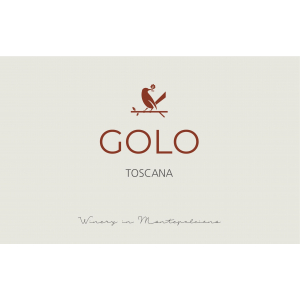 Golo is a small winery a few kilometers from the center of Montepulciano, located in the Cervognano area, which has always been considered one of the best areas for the production of wine.
Golo is a small winery a few kilometers from the center of Montepulciano, located in the Cervognano area, which has always been considered one of the best areas for the production of wine.The "Poggio Golo - Wine & Villa" project was born in 2021, the year of the first harvest and the year of purchase of the property, from the passion for history, culture and love for this country of Niall and Paari. Always fascinated by Italy, they decided to focus on the production of wine in Montepulciano, bringing their international experiences to this world.
Golo currently has 6 hectares of vineyards and approximately 250 olive trees, land in organic conversion. The vineyards are located around the company, with an almost 360° arrangement, exposed to North, South and East with an elevation between 200 and 300 m above sea level. Medium-textured soils mainly clayey, the vines are mainly trained with spurred cordon and are between 17 and 20 years old, with the exception of a small part, less than one hectare, which is 70 years old. The cultivated vines are Sangiovese, Merlot and Cabernet Sauvignon, harvested and selected manually during the harvest which takes place at the end of September. The production is approximately 35,000 bottles per year divided between Rosso di Montepulciano, Nobile di Montepulciano and IGT Toscana Rosso.
The Golo winery project is focus on respect for the territory and environmental protection, for this reason we are committed to sustainable production, aimed at creating authentic but at the same time modern and contemporary wines that reflect the cultural mix of our company.
Tenuta Poggio alla Sala
Tenuta Poggio alla Sala
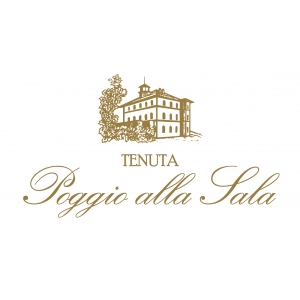
Through the centuries, agriculture has been a determining factor in the history, the landscape and the culture of this part of Tuscany, and Tenuta Poggio alla Sala is a perfect example of this.
The estate covers a total of 98 hectares, of which 38 hectares are planted with vines. The cultivation of vineyards and olive groves on the hillsides, contribution to the reclamation of the Valdichiana, the creation of a functioning water system in the early 19th century, and participation in the "Tuscan Silk Road" are the historical antecedents of the productive life of the farm today, concentated above all on the production of wine and oil.
Carefully selected, native vines cultivated in optimum production areas favour a characteristic production with the objective of enhancing quality and biodiversity, which the terroir and the experience of the Gattavecchi family succeed in exalting. Since 1997, indeed, Luca and Gionata Gattavecchi, fouth generation wine producers from Montepulciano, have dedicated themselves with enthusiasm to cultivating those values that Tenuta Poggio alla Sala has been able to preserve over the centuries.
Tenuta Trerose
Tenuta Trerose
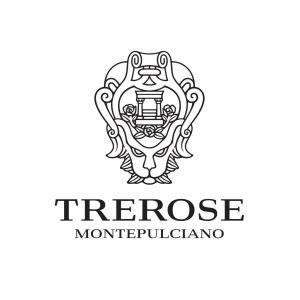 There are many historical finds, sources and documents which date the estate as far back as Roman times. The Estate is located in a strategic position between two important ways of communication used between the first and second centuries a.D.: the Via Lauretana and the Chiana Canal. This beautiful estate, covering five hills, has a prestigious Villa in the center dating to 1521, to the period in which Cardinal Silvio Passerini (1469 –1529) was nominated Bishop of Cortona and erected the building. The farm is in the southeastern part of the Vino Nobile Designation, bordering Umbria and Lake Trasimeno.
There are many historical finds, sources and documents which date the estate as far back as Roman times. The Estate is located in a strategic position between two important ways of communication used between the first and second centuries a.D.: the Via Lauretana and the Chiana Canal. This beautiful estate, covering five hills, has a prestigious Villa in the center dating to 1521, to the period in which Cardinal Silvio Passerini (1469 –1529) was nominated Bishop of Cortona and erected the building. The farm is in the southeastern part of the Vino Nobile Designation, bordering Umbria and Lake Trasimeno.The Tenuta Trerose is undoubtedly one of the most beautiful wineries in the Designation for its hills, topography and landscape; it is not only rich from a winemaking point of view, but it is also of great historical and landscape interest. These valleys full of water dried up through the millennia, then these soils composed of sand (sandstone) and clay (rich in salt) were enriched with a precious silt deposit. Here, the cold continental climate of inland Tuscany encounters the environment of Lake Trasimeno, which exercises a positive influence over it to mitigate its harshness. On these soils and with this particular microclimate, the Prugnolo biotype of Sangiovese ripens later and gives wines that stand out for their softness and richness of flavour.
For almost ten years, Tenuta Trerose has embraced the principles of organic viticulture, focusing on an ethical and sustainable development. The orography of the Trerose hills, the exposure of the vineyards, the altitude, and a specific microclimate created a unique agronomic balance, a mosaic made of vineyards, woods and green areas that enrich the biodiversity of these places and make Tenuta Trerose particularly suitable for organic productions. All the activities on the land and in the winery aim at maintaining this balance, which is the key success factor of the company.
Sustainability is crucial and carefully applied to the whole production chain: energy resources management, human capital enhancement, respect for the land and for the Vino Nobile appellation.
Tenuta Valdipiatta
Tenuta Valdipiatta
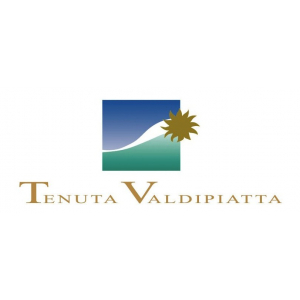 Tenuta Valdipiatta is a family-run winery and one of the oldest wine producing estate in the Montepulciano area. Founded in 1973, Valdipiatta experienced its period of most intense development in the late 1980s, when Giulio Caporali has decided to purchase a property which, despite its limited dimensions, had produced Vino Nobile di Montepulciano since the first years of life of the Appellation. Since 2003 the management of Valdipiatta passed into the hands of his daughter Miriam who, following in her father’s footsteps, chose to immediately dedicate herself to the enhancement of the Montepulciano terroir and native vines in compliance with conscious and sustainable viticulture.
Tenuta Valdipiatta is a family-run winery and one of the oldest wine producing estate in the Montepulciano area. Founded in 1973, Valdipiatta experienced its period of most intense development in the late 1980s, when Giulio Caporali has decided to purchase a property which, despite its limited dimensions, had produced Vino Nobile di Montepulciano since the first years of life of the Appellation. Since 2003 the management of Valdipiatta passed into the hands of his daughter Miriam who, following in her father’s footsteps, chose to immediately dedicate herself to the enhancement of the Montepulciano terroir and native vines in compliance with conscious and sustainable viticulture.Tenuta Valdipiatta currently owns 22 hectares planted to vines and is a true oasis of biodiversity. Thanks to natural fertilization practices, spontaneous or sowed cover crops, the creation of floral carpets and the conservation of ecological corridors such as hedges, woods and waterways, the Valdipiatta vineyards represent a varied and complex ecosystem. This habitat is capable of hosting and nourishing wild fauna useful to the vine as well as a diversified flora capable of favoring the presence of a vast range of pollinators. The owners of the winery also keep bees and earthworms for the production of humus. In 2018 Tenuta Valdipiatta achieved the Organic Certification.
Terra Antica Az. Agr.
Terra Antica Az. Agr.
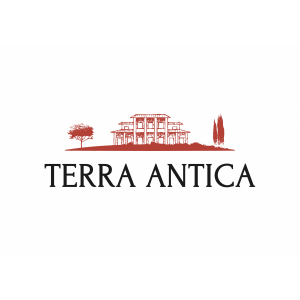 Small / medium-sized company extremely attentive to sustainability, respect for nature, working in harmony with the environment. Terra Antica offers an entirely organic production, both of wine and oil.
Small / medium-sized company extremely attentive to sustainability, respect for nature, working in harmony with the environment. Terra Antica offers an entirely organic production, both of wine and oil.In an area dedicated to one of the most elegant Sangiovese species, Prugnolo Gentile, Terra Antica has intervened in listening to the needs of the land and the vineyard, with respect and rigor, obtaining organic wines that have immediately received the success of critics and of the public.
Triacca Tenuta Santavenere
Triacca Tenuta Santavenere
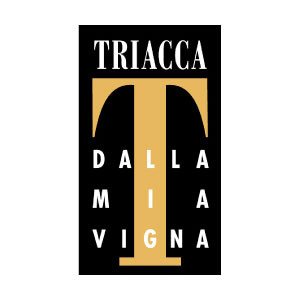 The estate was founded by Domenico Triacca in 1897 when he bought 2000 sq.m of vineyard in one of the most attractive zones of the Valtellina. Today with the fourth generation the Casa Vinicola Triacca is in full production and owns 42 hectares of vineyard in the best zones of the Valtellina. In the early 1970 is the range of products was extended to the renowhed fine wines of Chianti Classico with the acquisition of the Fattoria “LA MADONNINA”.
The estate was founded by Domenico Triacca in 1897 when he bought 2000 sq.m of vineyard in one of the most attractive zones of the Valtellina. Today with the fourth generation the Casa Vinicola Triacca is in full production and owns 42 hectares of vineyard in the best zones of the Valtellina. In the early 1970 is the range of products was extended to the renowhed fine wines of Chianti Classico with the acquisition of the Fattoria “LA MADONNINA”.It was logical that Vino Nobile di Montepulciano should be included among the estate’s acquisitions of Tuscany’s great red wines and in 1990 the Casa Vinicola Triacca added to its range of wines the “Nobile Santavenere”, produced at the Fattoria Santavenere of Montepulciano. Here, with 30 hectares of specialized vineyard in production the estate produces its own Vino Nobile. Building and renovation work was completed. e cellar has a capacity of 4000 hectolitres, partly in barriques, and it can vinify the grapes from the estate vineyards in total respect for the environment while keeping up with the times. Following family tradition the Tuscan estates are managed by Luca Triacca.
Vannutelli
Vannutelli
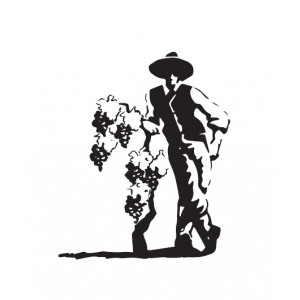 Where the ancient vineyards of Montepulciano once stood, the farm Vannutelli was born. Started in 2015, the young owner, Edoardo Maria Vannutelli, took over the family land and vineyards to create a new agricultural reality based mainly on wine production. After years of recovery, settlement, research, and conversion to organic methods, in 2020 the company embarked on the first production of Nobile di Montepulciano with the aim of obtaining a contemporary product while respecting tradition, sustainability and culture. Over time, a sustainable and territory-friendly company is being created, a small niche business with the right volumes. Open to sharing and synergies in order to develop an increase in terms of cooperation, product promotion and valorization of the geographical position while maintaining a base dedicated to tradition, culture and developing commercial and technological environmental concepts in a modern key. The main objective is to demonstrate to the consumer the identity of a quality, typical and sustainable product, linked with culture and the environment, but above all shareable.
Where the ancient vineyards of Montepulciano once stood, the farm Vannutelli was born. Started in 2015, the young owner, Edoardo Maria Vannutelli, took over the family land and vineyards to create a new agricultural reality based mainly on wine production. After years of recovery, settlement, research, and conversion to organic methods, in 2020 the company embarked on the first production of Nobile di Montepulciano with the aim of obtaining a contemporary product while respecting tradition, sustainability and culture. Over time, a sustainable and territory-friendly company is being created, a small niche business with the right volumes. Open to sharing and synergies in order to develop an increase in terms of cooperation, product promotion and valorization of the geographical position while maintaining a base dedicated to tradition, culture and developing commercial and technological environmental concepts in a modern key. The main objective is to demonstrate to the consumer the identity of a quality, typical and sustainable product, linked with culture and the environment, but above all shareable. Vecchia Cantina di Montepulciano
Vecchia Cantina di Montepulciano
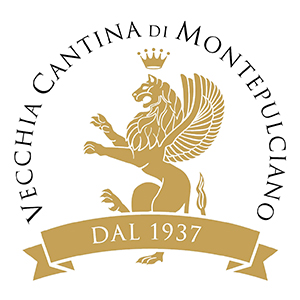 La Vecchia Cantina di Montepulciano is the oldest Tuscan wine cooperative. It was born in 1937 from the dream of fourteen winemakers who wanted to create a new benchmark for the production of local quality wines. Overcome the difficulties of the ‘40s and’ 50s agricultural reorganization, the cooperative was able to act as a real engine for the country’s economy, a role that continues to this day.
La Vecchia Cantina di Montepulciano is the oldest Tuscan wine cooperative. It was born in 1937 from the dream of fourteen winemakers who wanted to create a new benchmark for the production of local quality wines. Overcome the difficulties of the ‘40s and’ 50s agricultural reorganization, the cooperative was able to act as a real engine for the country’s economy, a role that continues to this day.Production is centered on the Vino Nobile di Montepulciano, it is the largest producer. For some years now the range has also expanded to other appelletions of the territory, differentiating the production lines according to market needs, as for example the “Organic Line” Vecchia Cantina Brand with the Nobile di Montepulciano and Rosso di Montepulciano.
The experience of over eighty years of viticulture feeds about 1,000 total hectares of vineyards, situated in the area of Montepulciano and treated with professionalism and dedication from about 400 winemakers. The main complex of Vecchia Cantina can be visited, with its corporate shop and the magnificent 2800mq underground cellar.
Villa S. Anna
Villa S. Anna
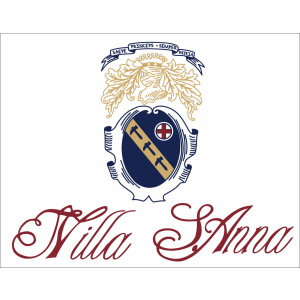 The Villa S. Anna winery is part of a larger property owned for about two hundred years by the family of Simona Ruggeri Fabroni.
The Villa S. Anna winery is part of a larger property owned for about two hundred years by the family of Simona Ruggeri Fabroni.It is situated on the hills around the town of Montepulciano, renowned for its fine wines. For many years Simona has been committed to upholding the ancient, passionate family tradition of promoting and selling fine quality wines, with the help and encouragement of her daughters Anna and Margherita. This all-women team dedicate passion and skills to improving their wines, planting new vineyards at a high density of plants per hectare, replacing barrels and barriques at the appropriate time, and taking scrupulous care of the centuries-old underground cellars where all the wines are aged at natural tempratures. The Chianti Colli Senesi DOCG is made from selected grapes from these vineyards; the highly enjoyable Rosso di Montepulciano aims to satisfy the demands of any connoisseur in any circumstances; and scaling the quality heights of the sector is the sophisticated Vino Nobile di Montepulciano. In really excellent vintage years, a careful and strict selection of the best grapes destined for Vino Nobile di Montepulciano are used to make the wine that is pride of the winery: “Poldo”.